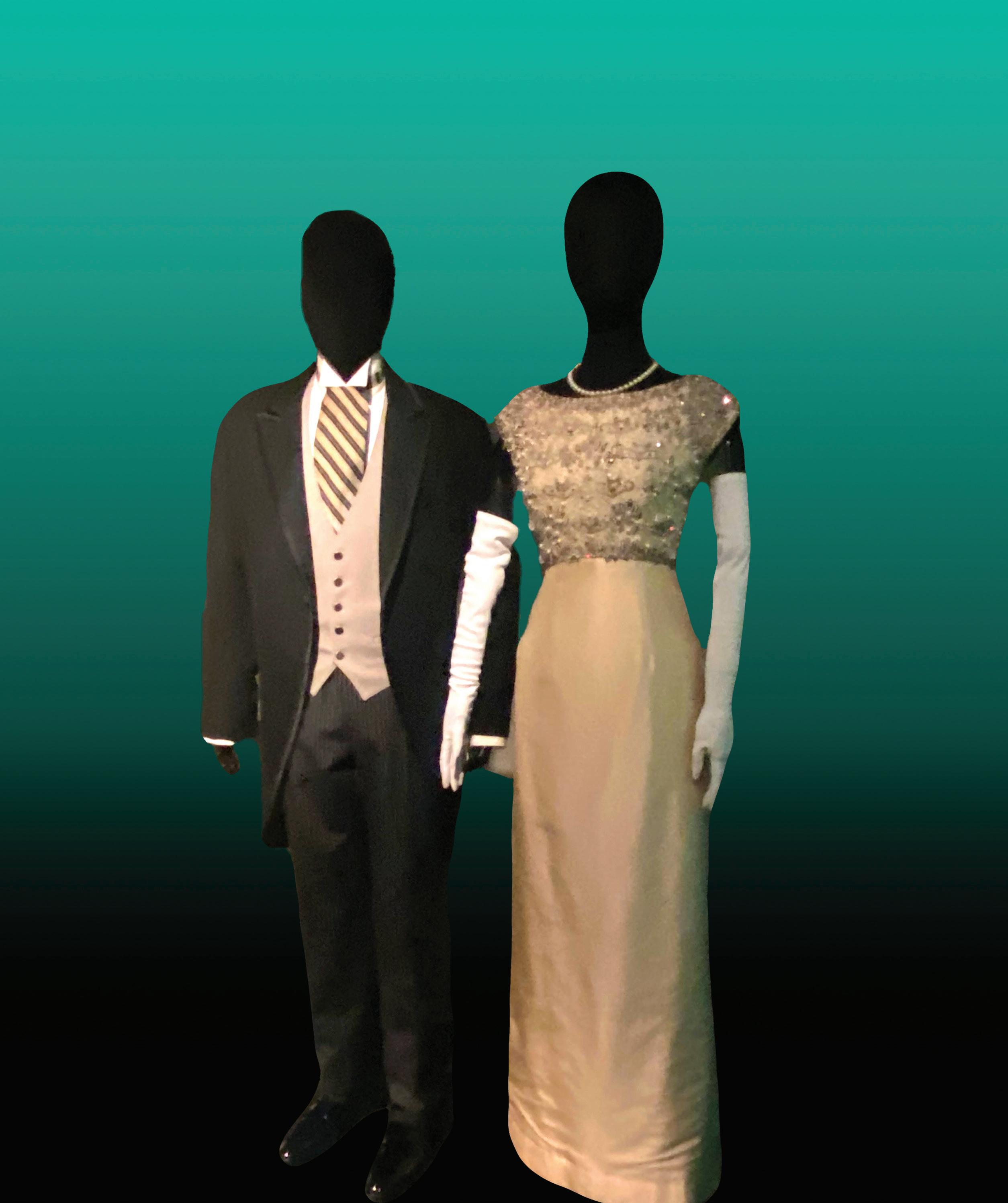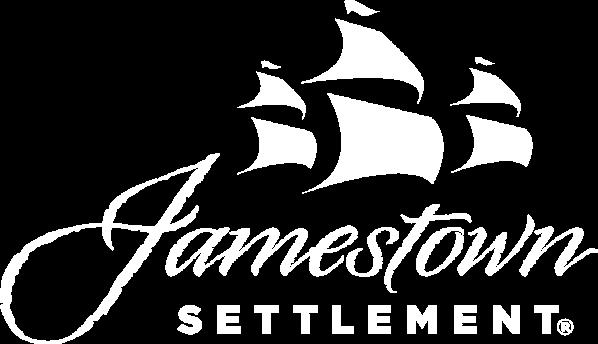INSIDE JYF
SUMMER 2024


SUMMER 2024

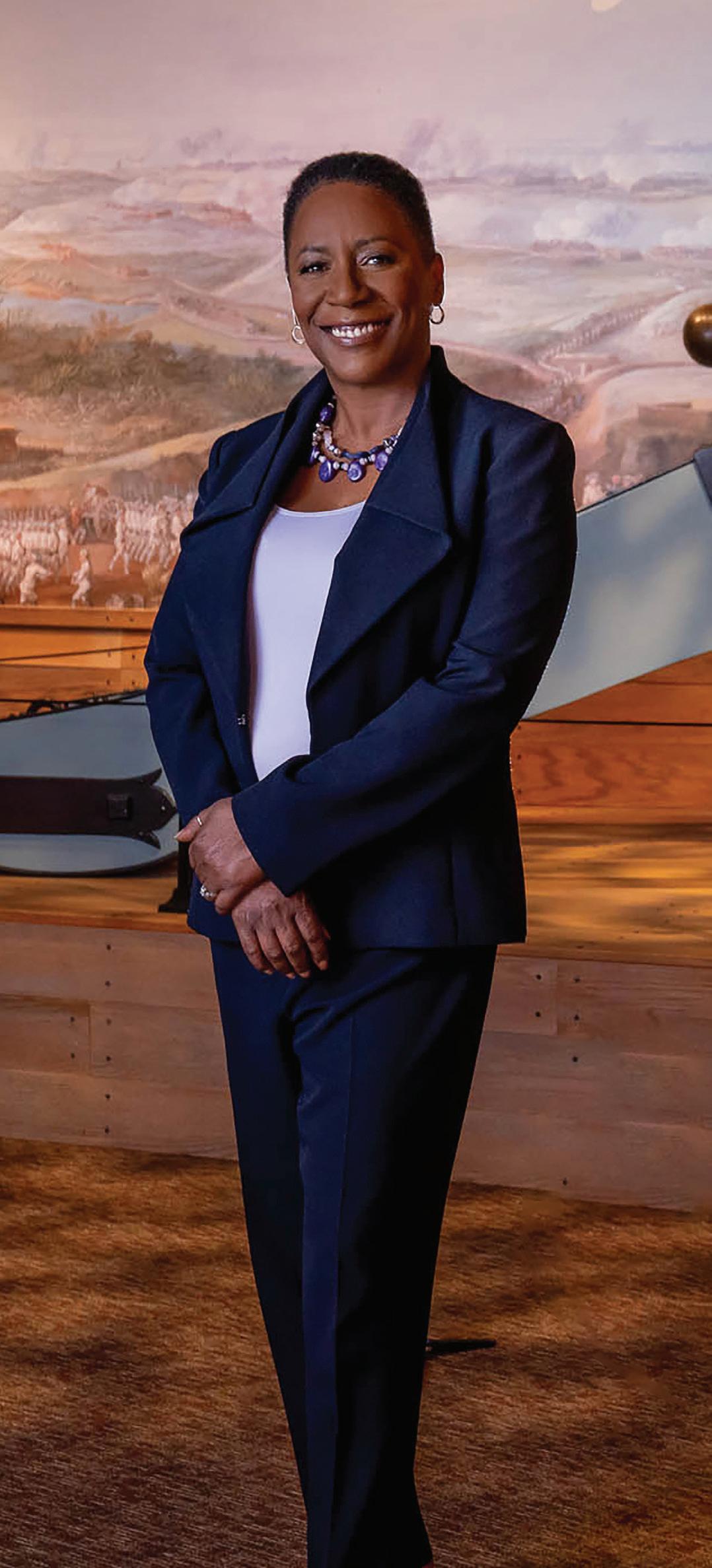
Creativity and design converge this summer at the Jamestown-Yorktown Foundation, where new exhibits, events and programs propel the senses and energize new ways of telling American history.
In this issue of INSIDE JYF, you’ll discover the iconic work of two-time Academy Award-winning costume designer Ruth E. Carter in a new exhibition and how she uses elements of history to inspire her clothing to shape characters, depicting people of the past to the Afrofuture in film and television, and the unique experiences of our museum staff to make this exhibition a reality.
A parallel unfolds as we showcase similar techniques that JYF tailors use to create authentic garments for a cast of historical interpreters and, through a series of hands-on experiences, invite guests of all ages to examine textures, colors and more to bring the past to life through fashion.
Commemorate the 200th anniversary of the Marquis de Lafayette’s Grand Tour of America in 1824 and his return visit to Yorktown after the Revolution, and mark your calendars for celebratory programs leading to the 250th anniversary of the American Revolution.
We remain grateful to the many enthusiastic and committed Board members, donors, staff and volunteers who help shape our organization and guide our mission, past and future. We invite you on this journey with us to rediscover our museums and the experiences that await you.
Yours truly,
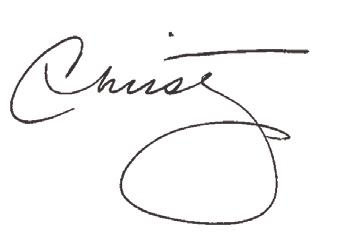 Christy S. Coleman Executive Director
Christy S. Coleman Executive Director
MARK MULLIGAN TRACY PERKINS
Editors
JOAN HEIKENS JANET KANE
CATHY FOX RAWLINS
Production Management
HOLLAND WINSLOW
Designer
CONTRIBUTORS
Cindy Daniel, Constance Graham, Heather Hower, Erin Koch, Lianne Koch, Mariruth Leftwich, Lisa Lucas, Cora Perkins, Deana Ricks, Melissa Gill Thompson, Glenda Turner, Meghan van Joosten
WRITERS/PHOTOGRAPHERS
Felicia Abrams, Anne Marie Baker, Olivia Glum, Jane Hohensee, Dexter Johnson, Janet Kane, Mariruth Leftwich, Sarah Meschutt, Heather Minty, Samantha Pietrinferno, Sarah Raiford, Konstantin Rega, Bob Ruegsegger, Lee Ann Shelhorse, Lara Templin, Meghan van Joosten
Enjoy INSIDE JYF? Support the museums by donating to the Jamestown-Yorktown Foundation, Inc. If you no longer wish to receive INSIDE JYF in print or would like to convert to digital, email insidejyf@jyf.virginia.gov or call (757) 253-4139.
Volume 4, No. 2 – printed May 2024
The Jamestown-Yorktown Foundation, an educational institution of the Commonwealth of Virginia accredited by the American Alliance of Museums, fosters through its museums—Jamestown Settlement and American Revolution Museum at Yorktown—an awareness and understanding of the early history, settlement, and development of the United States through the convergence of American Indian, European, and African cultures and the enduring legacies bequeathed to the nation.
JAMESTOWN-YORKTOWN FOUNDATION

P.O. Box 1607, Williamsburg, VA 23187 (757) 253-4838
jyfmuseums.org
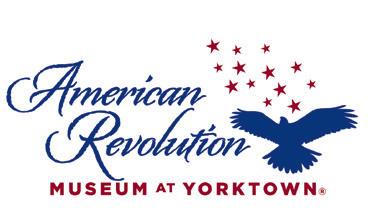
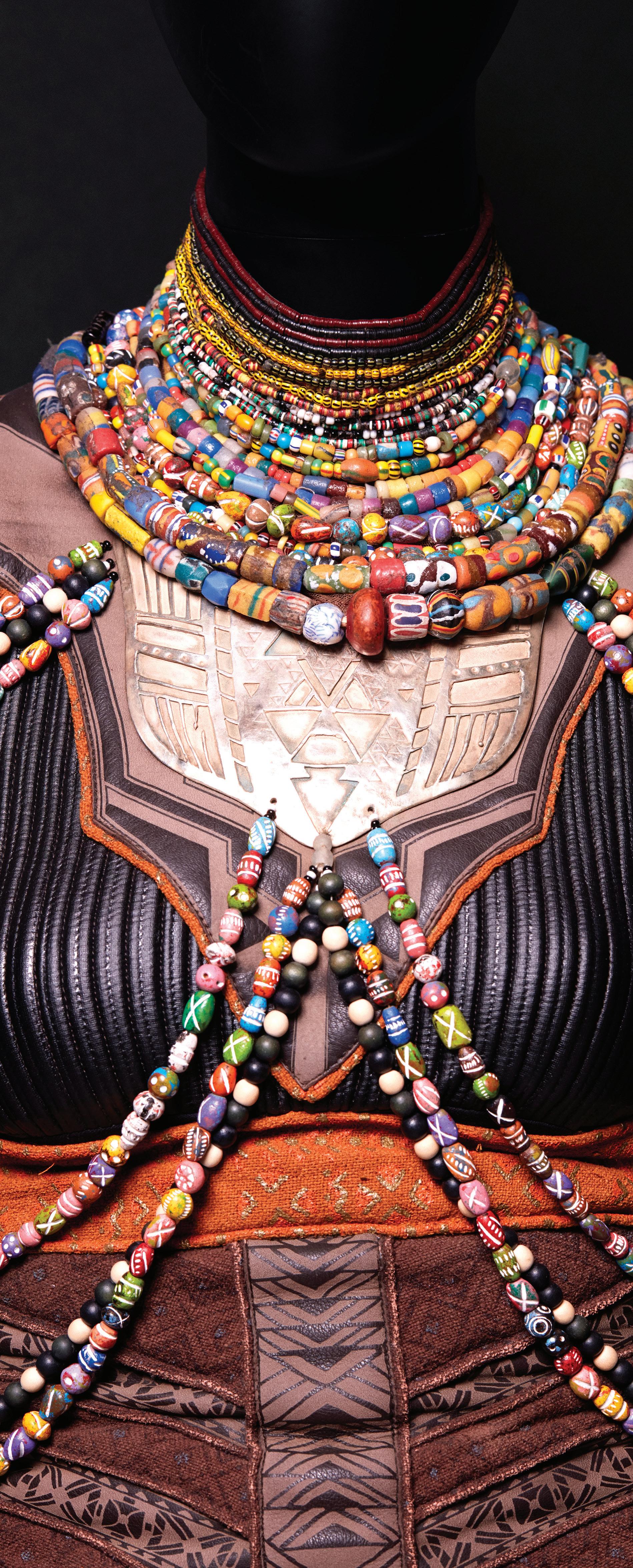
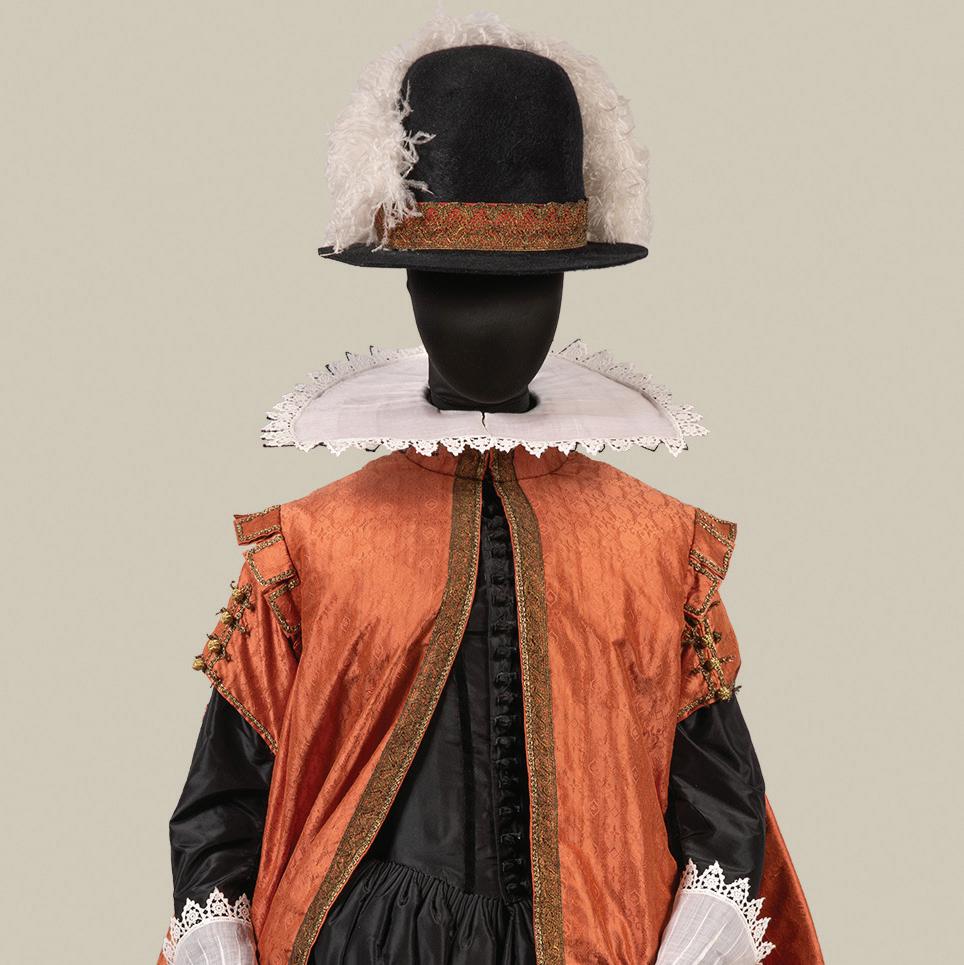
Stitch by stitch, historical tailors dress JYF interpreters in period clothing, crafting garments to tell a range of stories about the past. Tailors re-created this fashionable English ensemble worn by Pocahontas during her time in London in 1616, captured in an engraving by Simon Van de Passe and the only known portrait of her from life. Dressed in a stiff lace and wire “rebato” collar, silk gown and fur felt hat, the historical garment takes centerstage in a special “Fashioned in History” exhibit complementing the contemporary and futuristic costumes by acclaimed designer Ruth E. Carter. Read about the extensive research and analysis behind historical clothing. 8


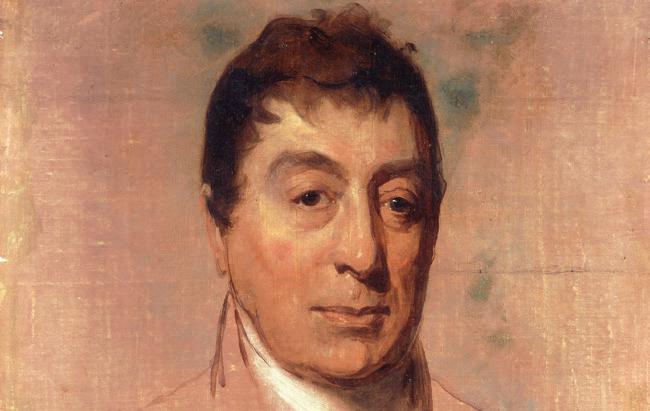
Lafayette Grand Tour, 1824-25
A bicentennial tour of Lafayette’s sensational visit through a young nation.
Historical research informs visions of the future in this innovative exhibition of the iconic work of two-time Academy Award-winning costume designer, Ruth E. Carter. Jamestown Settlement showcases more than 60 of Carter’s original garments for characters in both historical and fictional film and television. From Marvel Studios’ “Black Panther” films to “Roots,” “Selma” and “Do The Right Thing,” her creations chronicle the rich tapestry of the human experience from Jamestown in 1619 through the antebellum strife to the radiant promise of Afrofuture. Read about the exhibition opening and the behind-the-scenes experiences of the Curatorial team to dress characters in Ruth’s clothes. 4
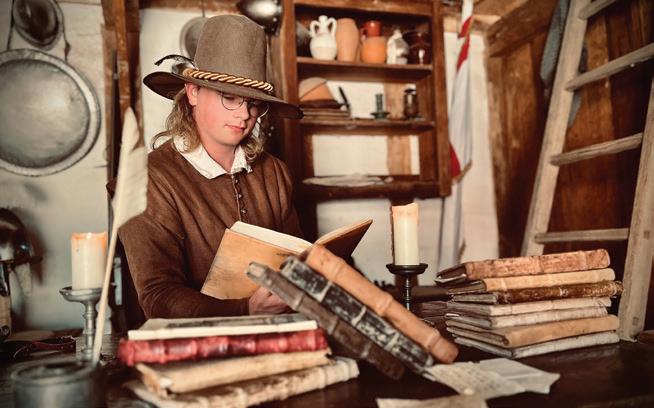
Library Partnerships
JYF joins forces with libraries to bring one-of-a-kind experiences to families.
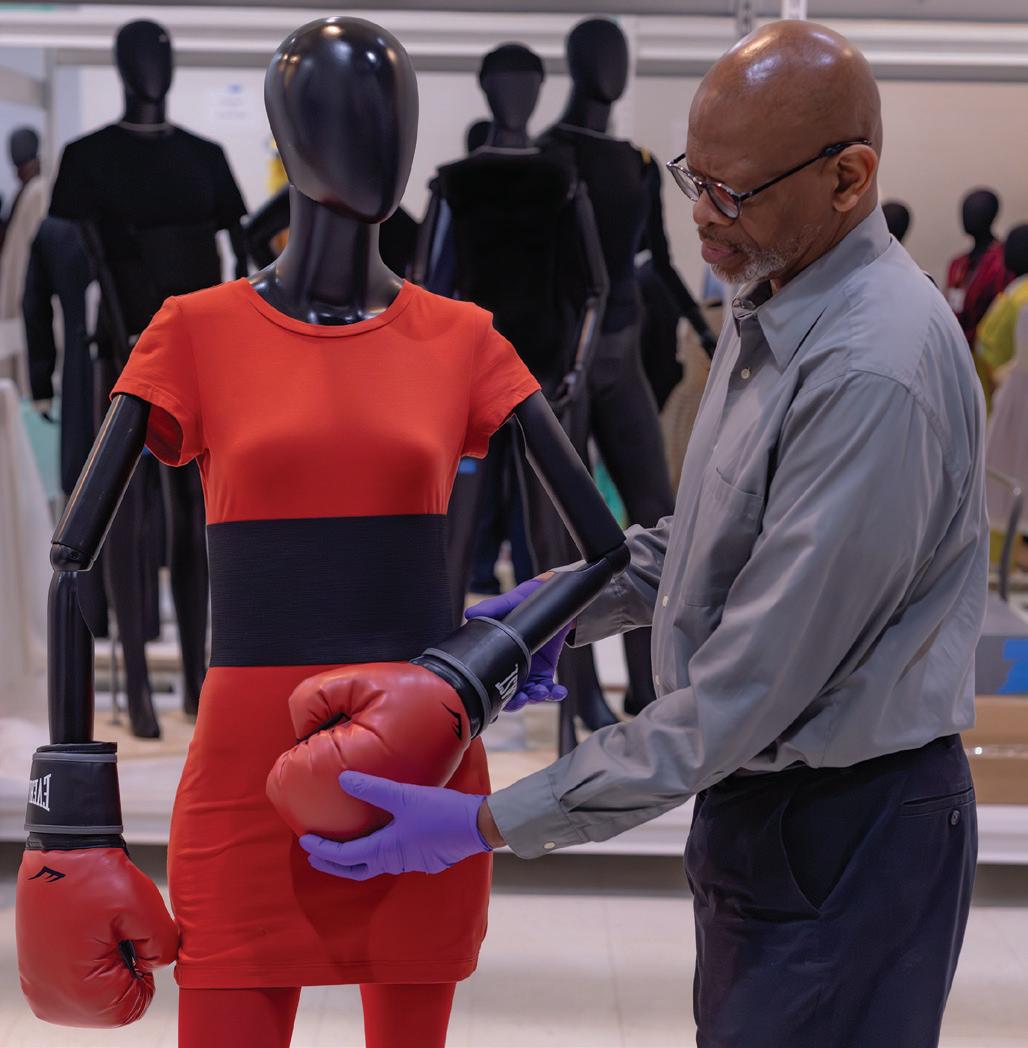

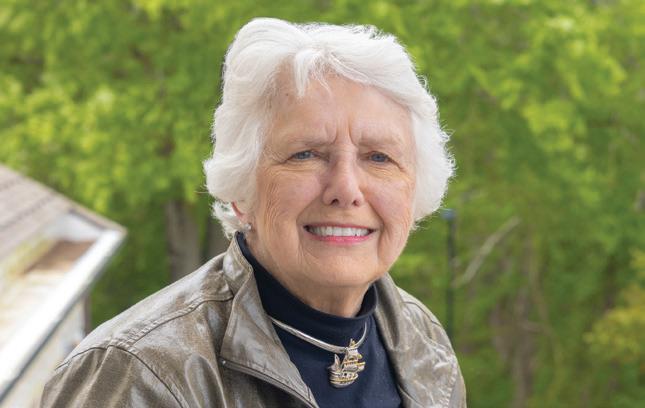
Staff Spotlight: Paul Everett Hear the heartwarming story of how Paul became a part of JYF history.
Donor Spotlight: Bonnie Cooper Learn how a historical fashion show inspired a dedicated supporter of JYF.
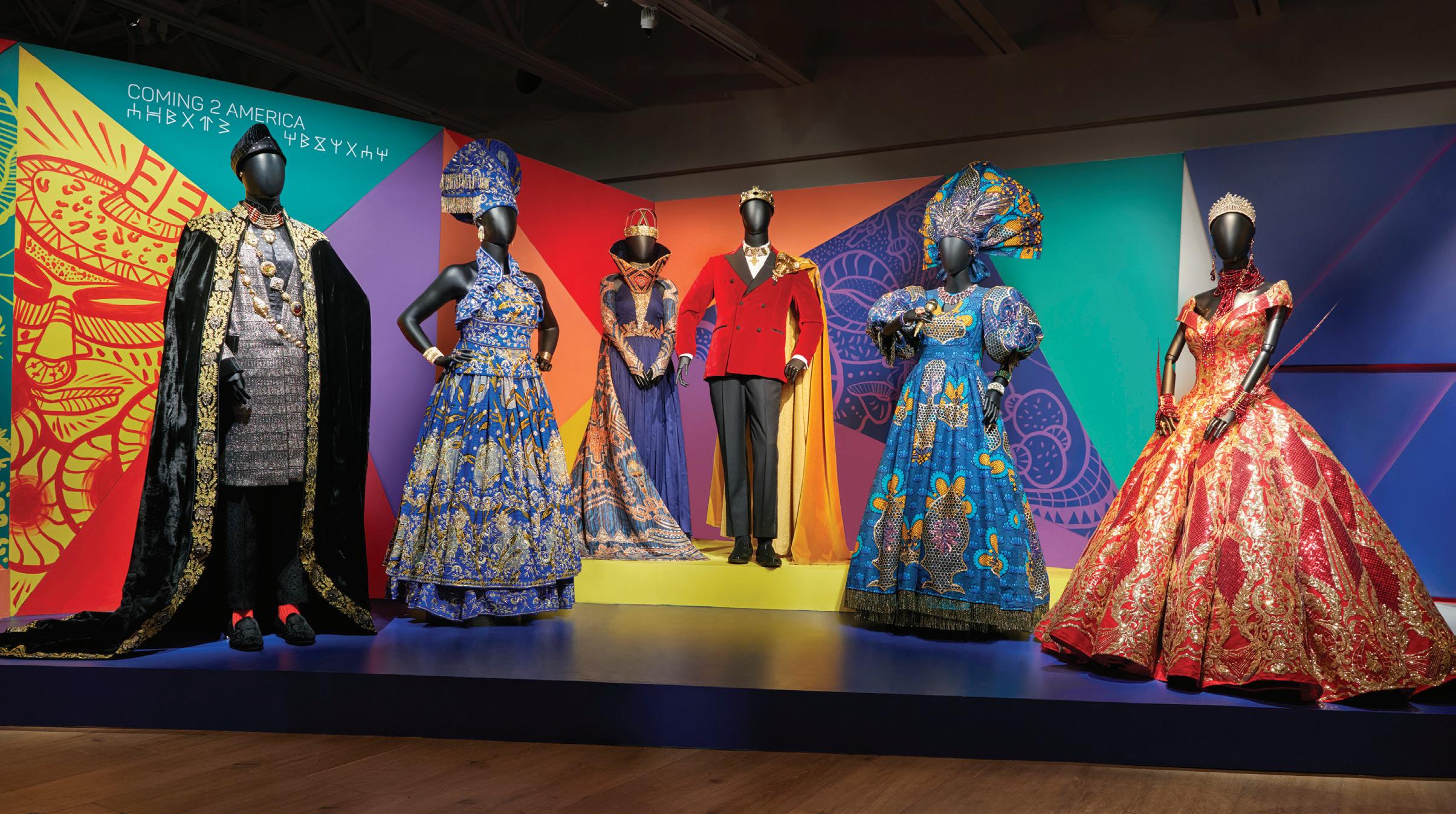
After many months of planning and preparation, the “Ruth E. Carter: Afrofuturism in Costume Design” special exhibition opened at Jamestown Settlement on Saturday, May 11 with sold-out public programming and exclusive donor opportunities. This touring exhibition was selected for display at Jamestown Settlement to elevate the important work of historic clothing research and design. The artistry of Carter’s work on exhibit parallels with the JamestownYorktown Foundation's history and costume design work, with both bringing the past to life for an inspired future. As exhibition planning developed, it became clear that Jamestown as a venue for this exhibition compelled both Foundation staff and Carter to think about the impact of her work in this place, where Virginia’s first Africans
arrived as captured slaves in 1619. It seems a fitting location for an exploration of an Afrofuture.
“Our ancestors dreamed of Afrofuturism in Jamestown!” Carter reflected. “I’m excited and honored to present ‘Ruth E. Carter: Afrofuturism in Costume Design’ and connect the story of our journey from 1619 to Wakanda.”
During the Director’s Series conversation with Christy Coleman on May 11, Carter further explored the concepts of Afrofuturism in her work, reimaging, reinterpreting and reclaiming the past by exploring Black identity, agency and freedom.
For donors, the exhibition’s opening weekend provided the opportunity to experience a personal exploration of the exhibition with a tour from Carter, who provided insights into her designs and process. Among them, Carter
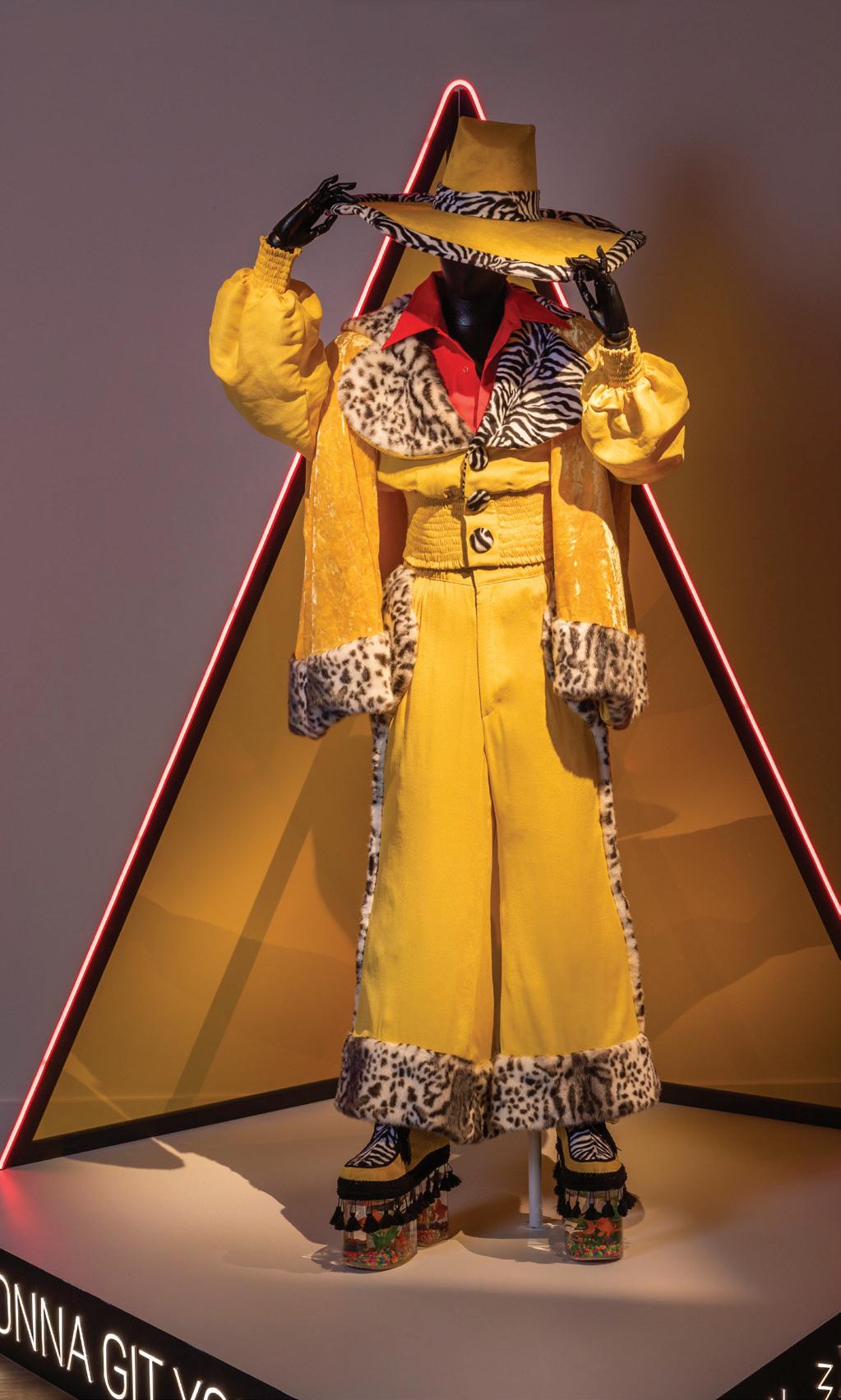
Check out JYF’s exclusive interview with Ruth E. Carter:
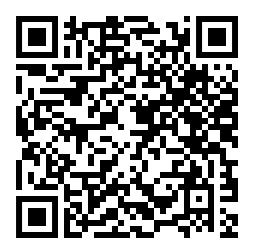
shared how her research into the tribal customs, patterns and beauty in Africa brought the story of Afrofuture to Marvel’s “Black Panther” films, imagining a futuristic story of an uncolonized place, and asking “what if this place was real – what would it look like?”
Audiences now have the opportunity to see the results of that research, as well as her research for nine other films, when they immerse themselves in the costuming and visual storytelling of Ruth E. Carter through December 1, 2024, at Jamestown Settlement.
—Mariruth Leftwich, Ph.D., Senior Director of Museum Operations & Education
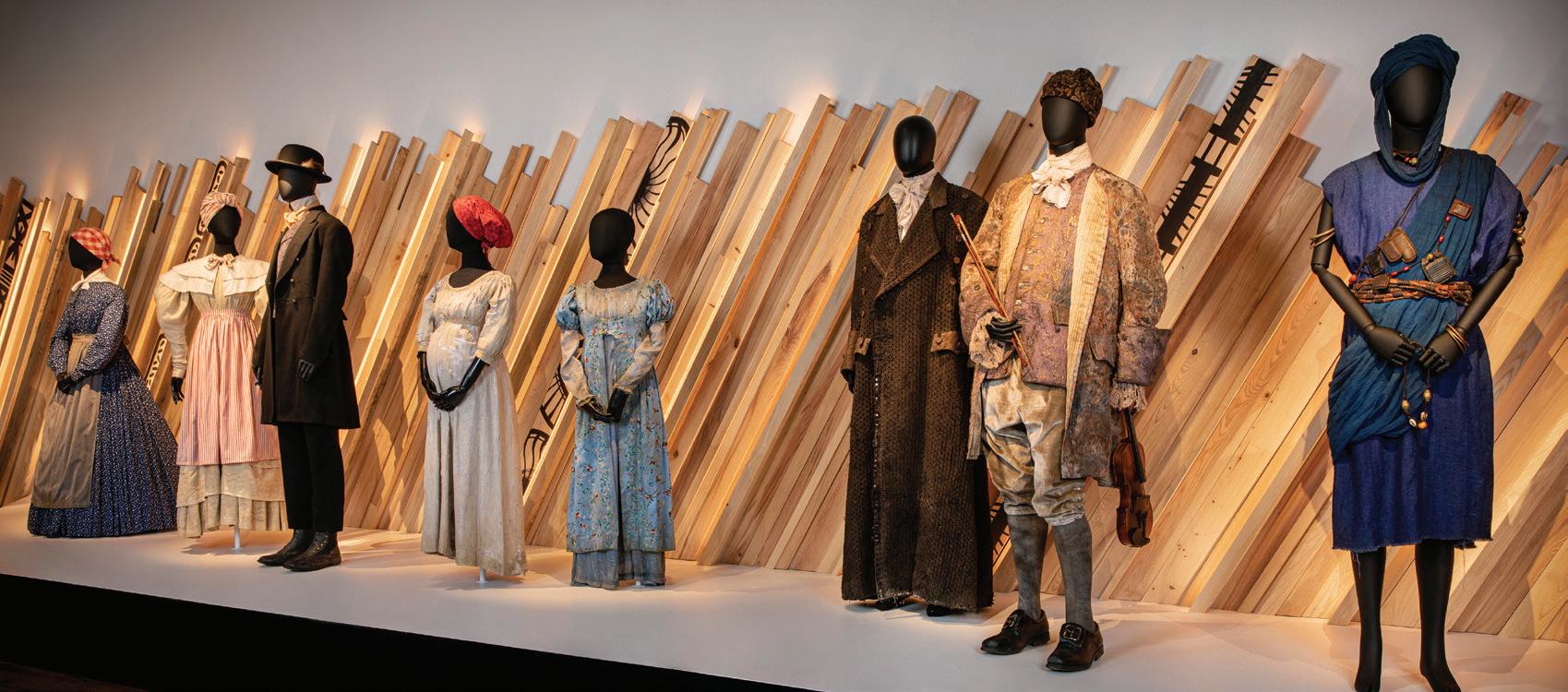
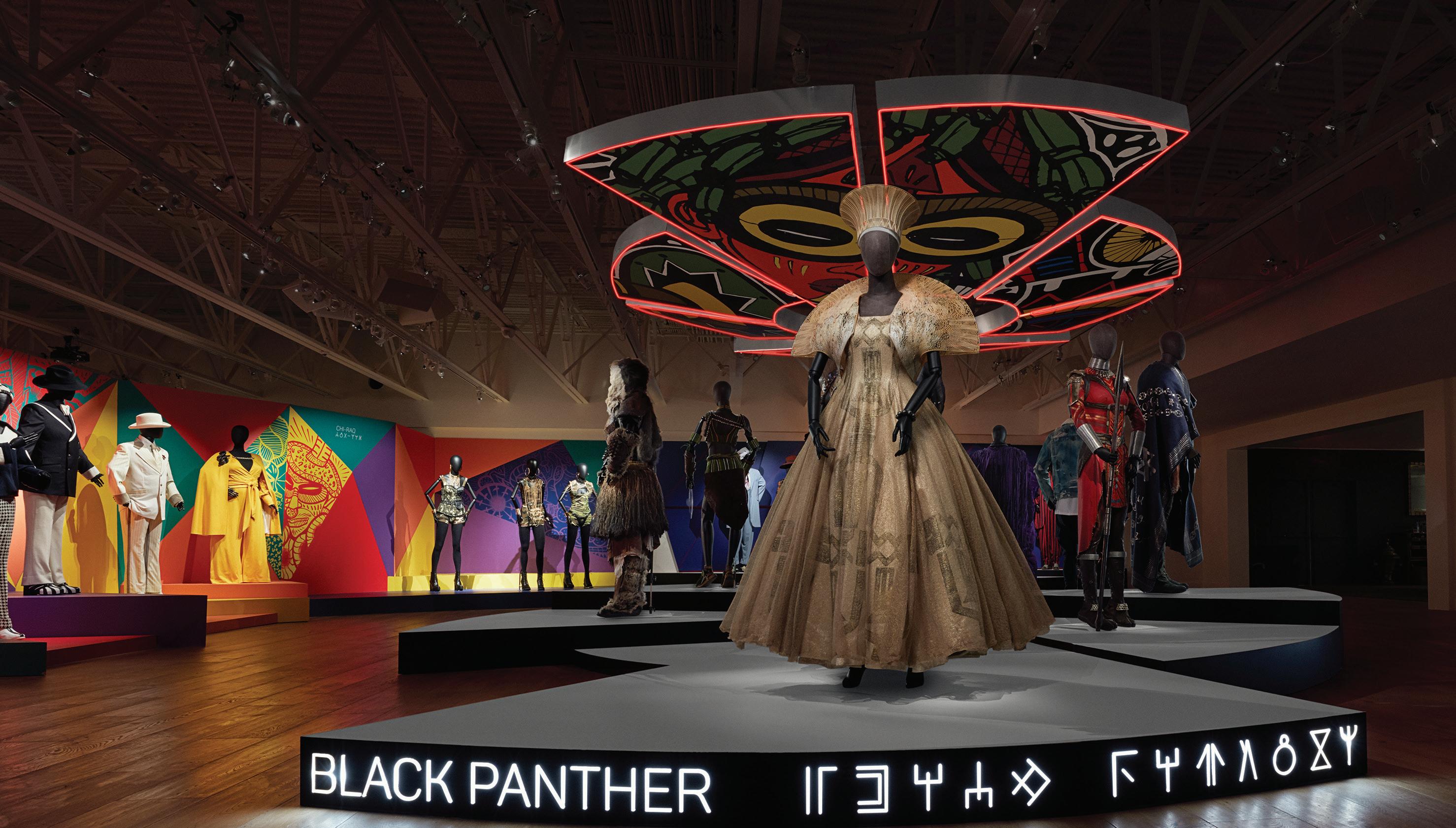

“Use distilled water in the platform shoes, goldfish are placed with fishing line.”
These surprising, detailed instructions were found in the dressing guide for the “Ruth E. Carter: Afrofuturism in Costume Design” special exhibition that debuted at Jamestown Settlement in May. Surprising until you realize that the referenced footwear are the acrylic aquarium-like shoes that are part of the fantastically flamboyant yellow suit that Ruth E. Carter designed for Fly Guy, a character from the 1983 movie, “I’m Gonna Git You Sucka.” The “goldfish” are orange plastic and not the pet shop variety.
There is beautiful, detailed complexity in Carter’s costumes, representing three decades of costume design for films and television by the two-time Academy Award winner. Each costume has numerous elements that create the impressive “look” for each movie character, such as the costume of “Roots” character Kunta Kinte that encompasses over eight elements: blue tunic, head wrap, leather pouches, belt, two necklaces and bracelets at the bicep and wrist.
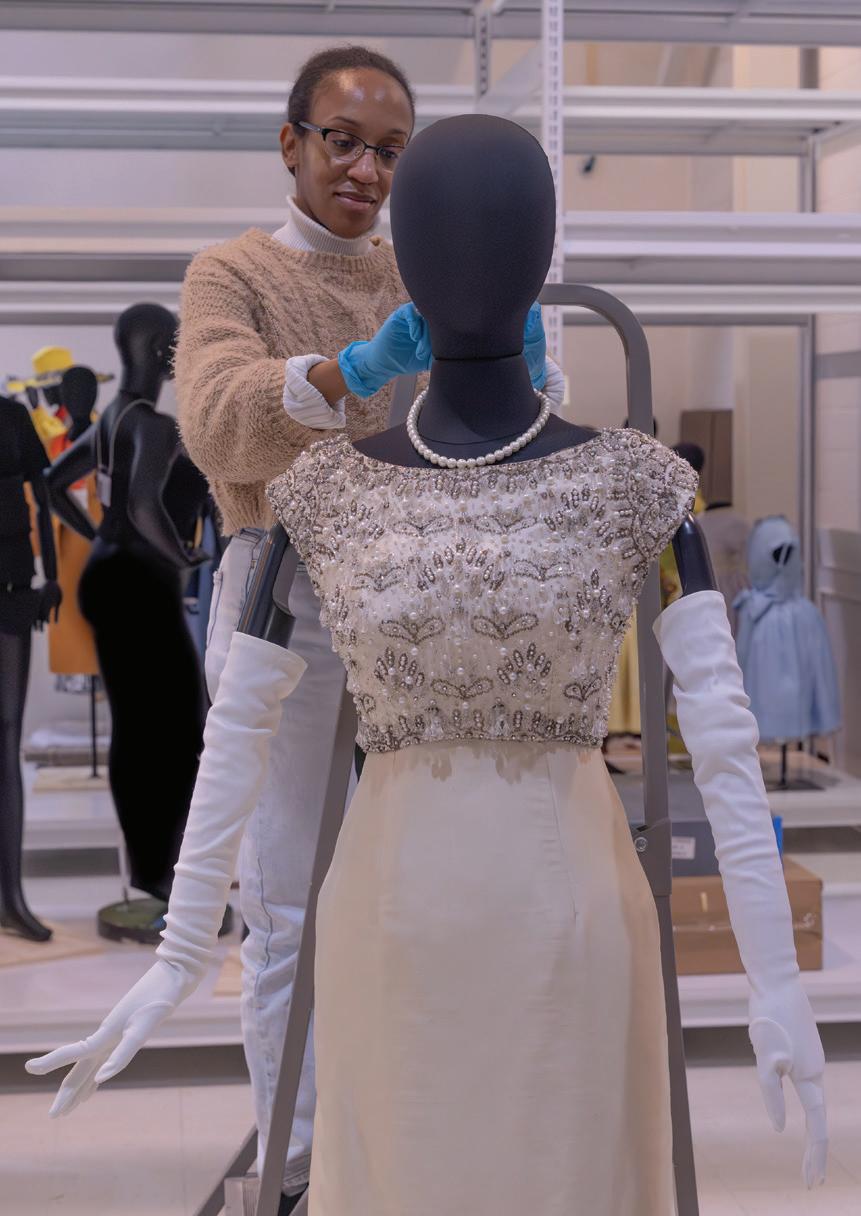
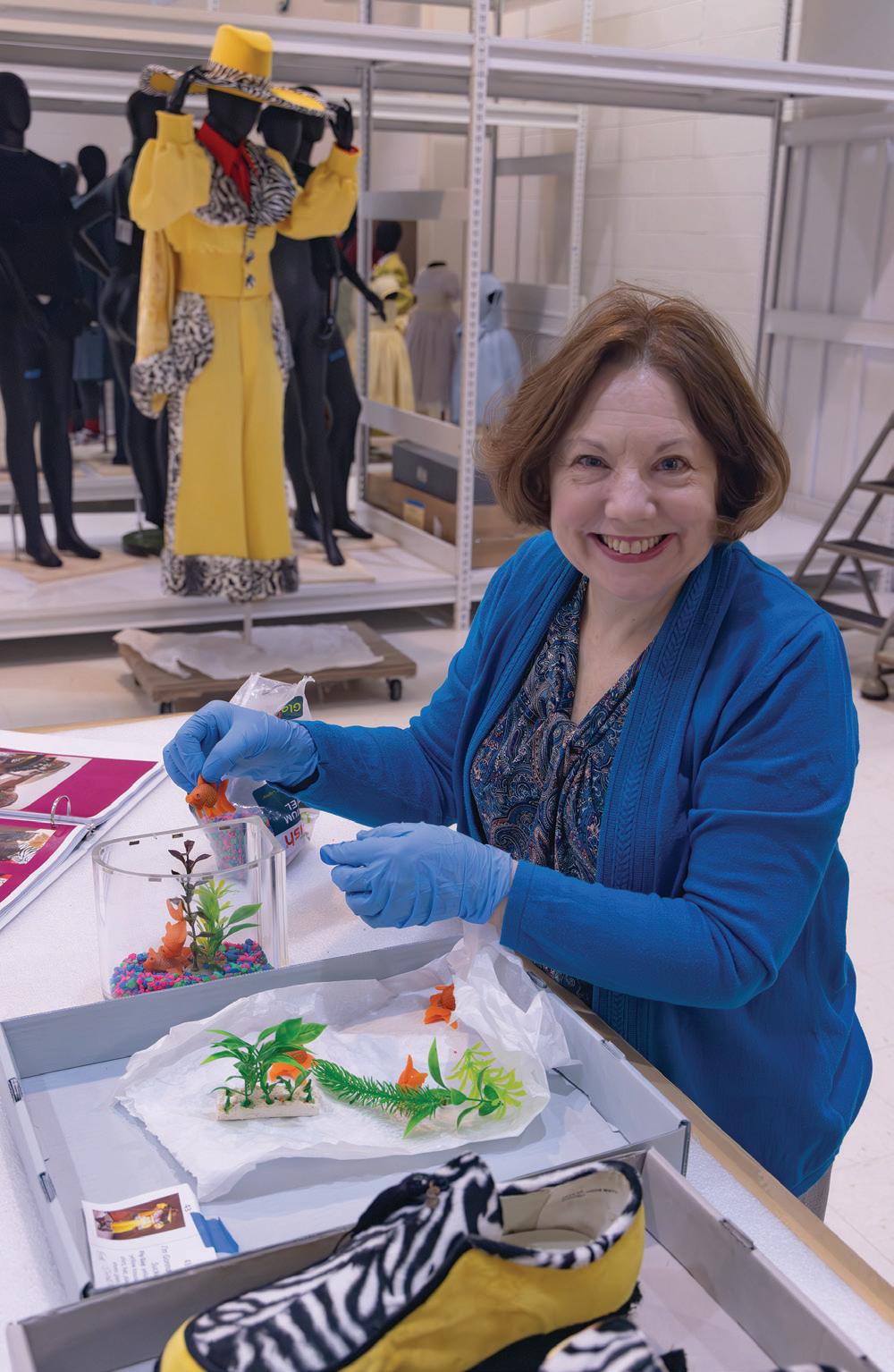
Before the costumes, mannequins and other exhibition content arrived at Jamestown Settlement, more than nine months of detailed planning and coordination occurred between the lenders, multiple internal museum departments and other stakeholders.
Before the costumes even arrived, spaces were prepared to receive numerous boxes, and plans and detailed spreadsheets were created to guide the order of dressing the mannequins. Upon arrival, the packages were organized according to their content, box size and weight.
The Curatorial team, comprised of the registrar, curators and a curatorial assistant led by the senior registrar, unpacked and assembled the bespoke mannequins according to the movie, attached them to support bases and dressed them. Curatorial department volunteers provided crucial support with mannequin assembly, inventories, planning and organizational activities.
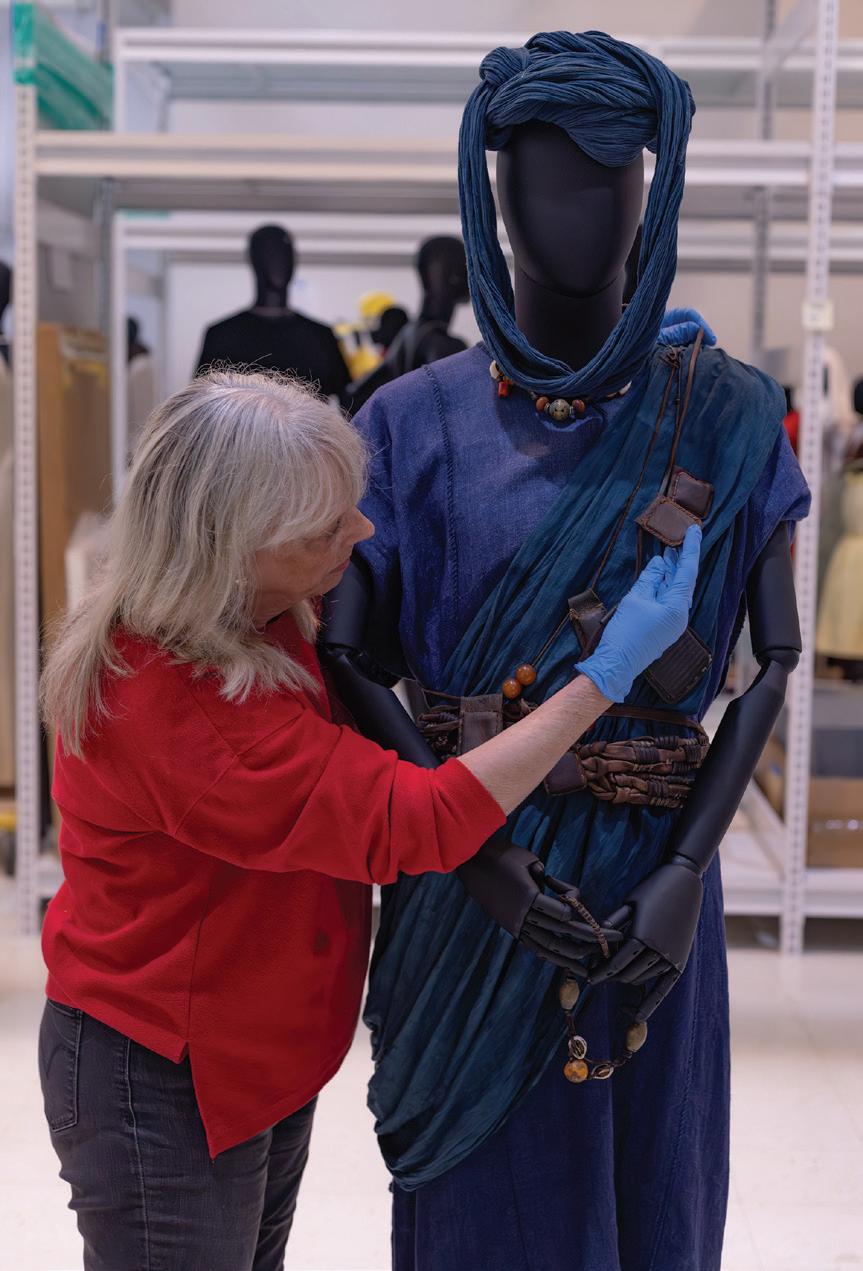
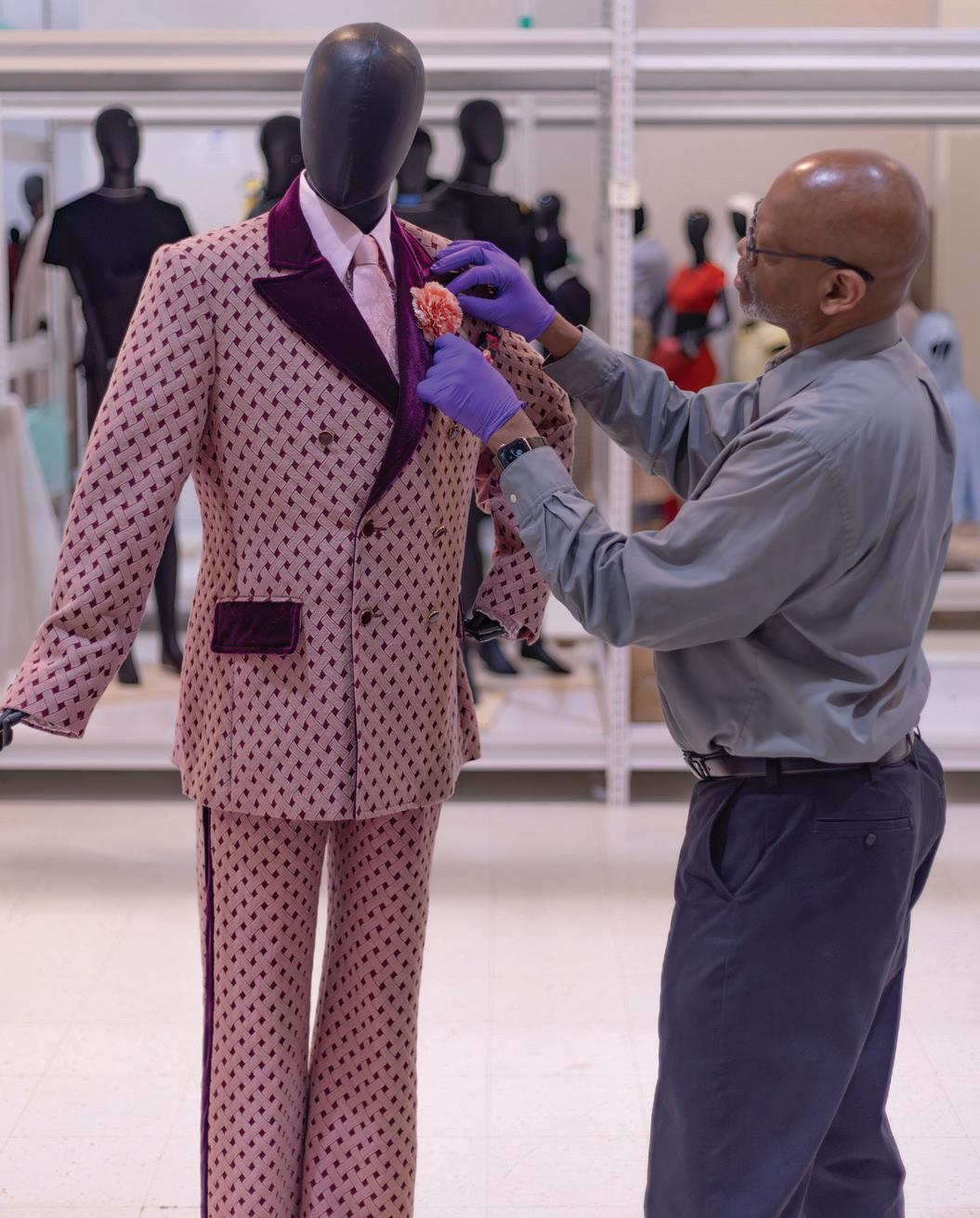
After a thorough inspection by the Curatorial team, each costume was checked against its individual condition report that accompanies the exhibition and photographed to document its condition. Accessories — shoes, socks, wigs, jewelry and hats for each character — were unpacked, inventoried and organized by each “look” in padded trays and placed on shelves. Then each mannequin was dressed in its corresponding costume ensemble by three Curatorial team members who layered gowns over petticoats, padded the mannequins where the instructions indicated and embellished with the accessories.
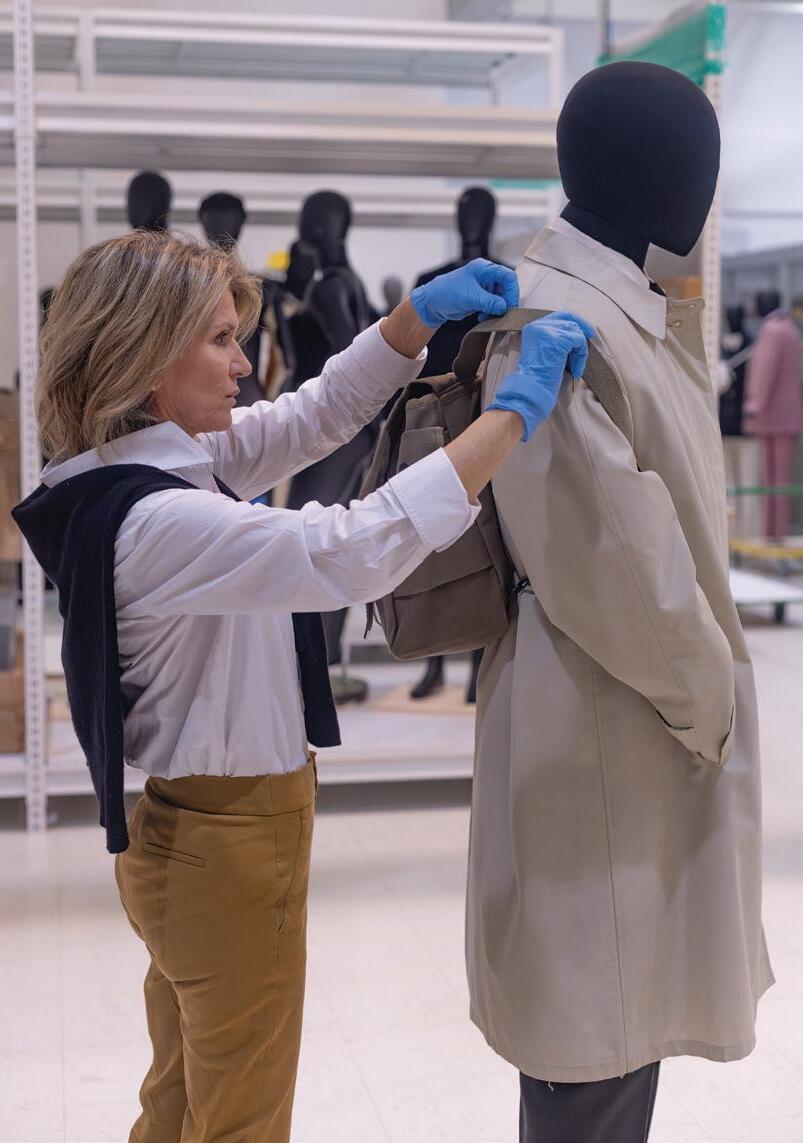
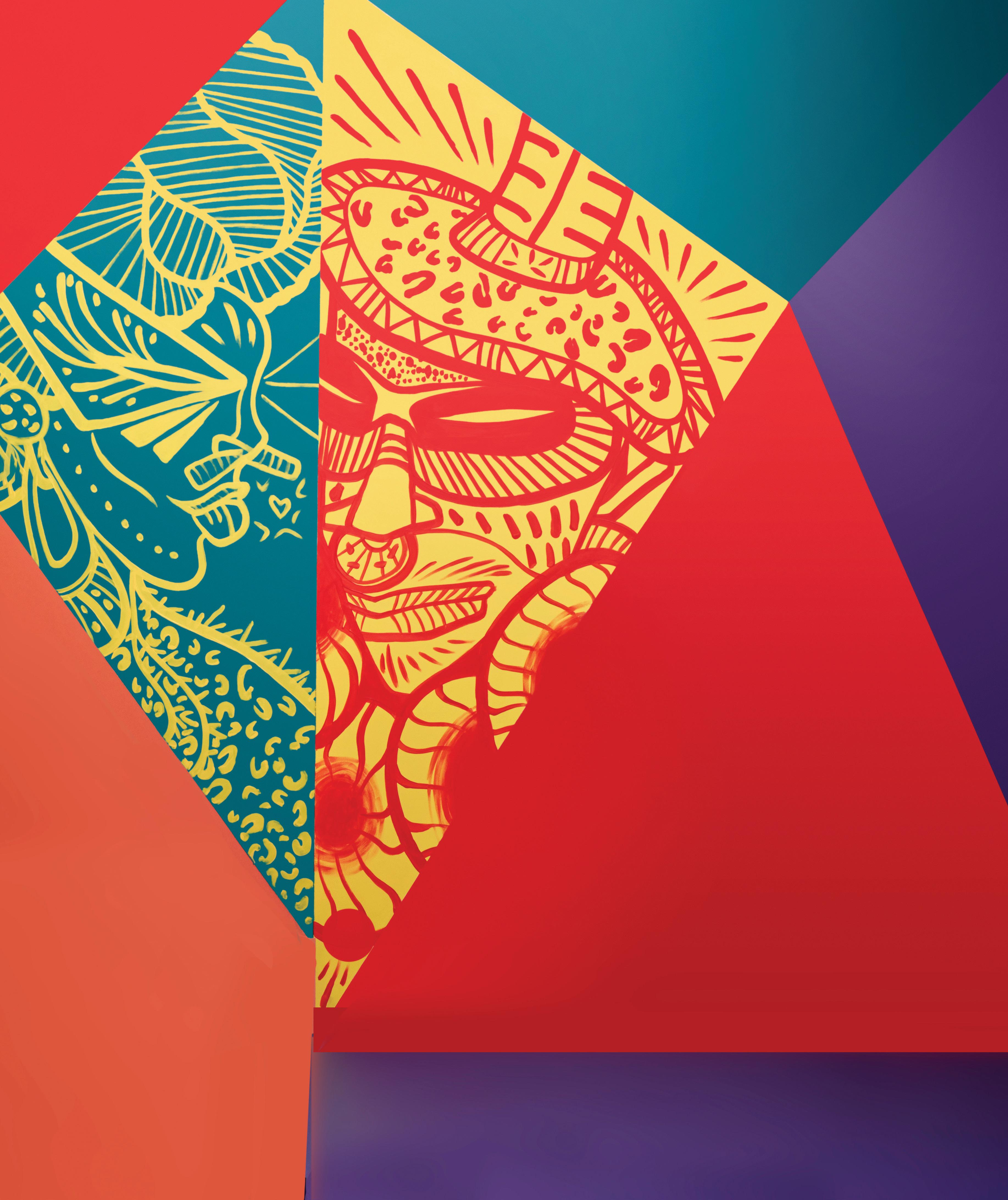
Guided in the dressing of mannequins by the accompanying aforementioned guide, the Curatorial team compared the dressed mannequins with reference images and instructions specific to each one to ensure each “look” was complete. For John Lewis in “Selma”: “hands should be in pockets.” “Fill out legs with tulle,” another one read. The Curatorial staff also followed best-handling practices while dressing, including avoiding wearing any jewelry that could snag delicate fabrics, handling textiles with clean, dry hands, using adequate numbers of skilled hands and maintaining a clean surface to support the costumes during dressing. Teams of Curatorial staff and volunteers, in two shifts, worked more than 600 hours over 14 days to prepare 59 mannequins and costumes for installation in the exhibition, followed by coordination with the Exhibit Services team and the Ruth E. Carter curatorial team to install each costume in their individual locations in the gallery in a span of 10 days.
Along the way, costumes from “Black Panther” and “Black Panther: Wakanda Forever” were carefully installed by Marvel Entertainment, bringing the total costumes on exhibit to 71.
The resulting exhibition, “Ruth E. Carter: Afrofuturism in Costume Design”— open through December 1, 2024 — is beautiful in every detail.
—Jane Hohensee, Senior Registrar
“It’s about being able to tell the stories through the clothing. In the exhibit, we’re not constrained by our museum interpretive areas, so we can do Queen Njinga, or an 18th-century Native woman … things we don’t always get to do otherwise.”
—Samantha Bullat, Jamestown-Yorktown Foundation historical tailor
Foundation’s historical clothing of the 1600s and 1700s takes center stage as an interactive element accompanying the “Ruth E. Carter: Afrofuturism in Costume Design” special exhibition at Jamestown Settlement.
Elaborate garments depict historical people, like Pocahontas — also known by her English name, Rebecca — dressed as an English woman, complete with a tall, feathered hat and striking rebato collar, or a soldier in the 1st Rhode Island regiment.
Historical clothing is also vital to the immersive experience of the outdoor interpretive areas at Jamestown Settlement and the American Revolution Museum at Yorktown. The look, feel and textures give a feeling of being back in time, invite discussion and let visitors know who has qualified to teach history. Created and maintained by the historical clothing tailors, the clothes must be durable enough to survive daily wear while also performing a range of historical tasks — from chopping wood to cooking over an open hearth.
Collaboration across the museums was paramount to making the exhibit a reality. The historical clothing shop partnered with the Exhibit Design, Curatorial, Gallery Visitor Experience, Education, Digital Media and Interpretative teams to offer a glimpse of the behind-the-scenes work that goes into making the museum experience.
Interpreters created clothing accessories like a feather mantle, pieces of jack-of-plate armor and Queen Njinga’s crown. Historical clothing tailors made most of the clothing items for the display and conducted the research behind it.
Historical clothing depicting Queen Njinga, who ruled the Ambundu kingdoms of Ndongo and Matamba in present-day Angola from 1624 to 1663.
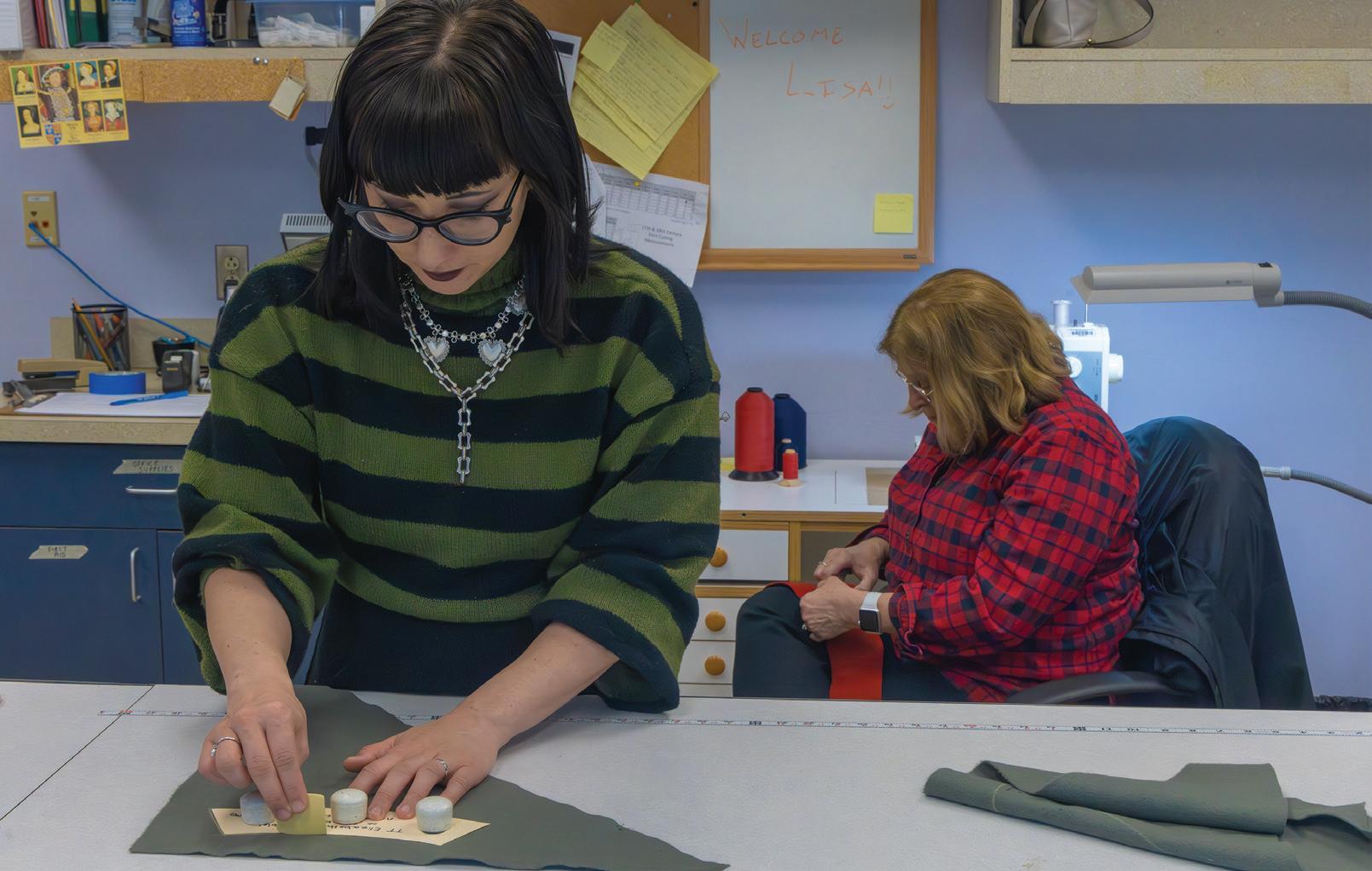
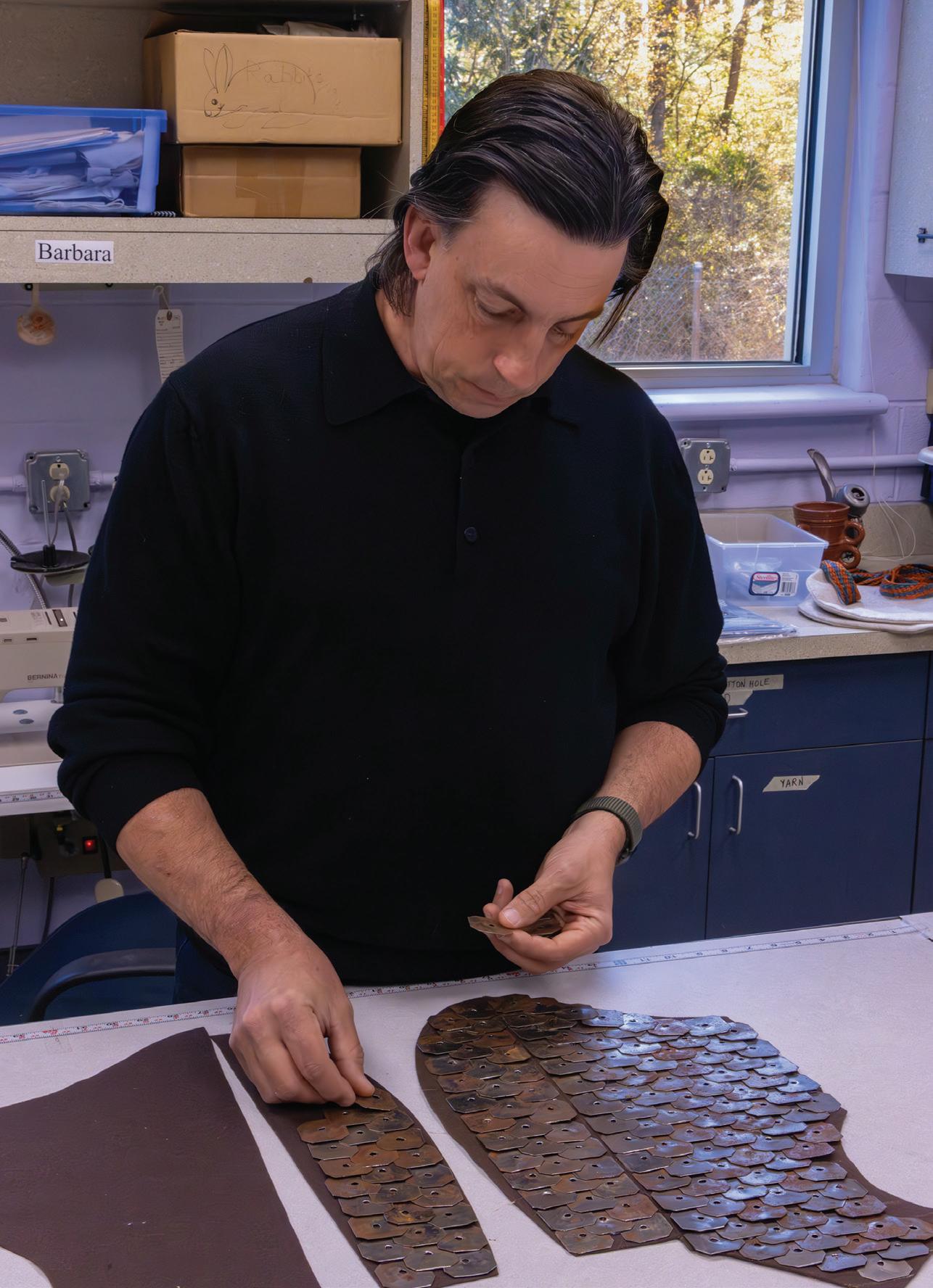
“The research is probably my favorite part,” said Samantha Bullat, historical tailor, stressing “the hunt to find examples, or answers to our questions about the clothing.” She is passionate “to turn research into something tangible that our guests can experience.”
The process is a tedious one. First, she must decide which stories to tell within the constraints of space, budget and time to manufacture the clothing, from corsets to breeches. Making sure that the clothing represents all three cultures outlined in the agency’s mission statement — Indigenous, European and West Central African — is key. She also wanted to share unique stories to expand on what visitors already experience in outdoor living-history areas.
Design boards in the exhibit highlight the sleuthing behind the selected JYF garments on display, a pattern followed for all the museums’ historical clothing — and one similarly followed by two-time Academy Award-winning designer Ruth E. Carter.
Primary sources are the beginning of the process to ensure historical accuracy. While some clues can be found in written descriptions from the time period, written sources are often quite limited. Illustrations usually offer more complete information. For example, 17th-century watercolors by missionary Giovanni Cavazzi in 1690 inform the reproduction of clothing for Queen Njinga, ruler of Ndongo. A watercolor of Revolutionary War soldiers by French artist Jean Baptiste Antoine de Verger (1762-1851) illustrates the uniform of the 1st Rhode Island Regiment. The engraving of Pocahontas by Simon Van de Passe in 1616, the only depiction of Pocahontas known to be made from life, shows her dressed in Jacobean court attire during her visit to England.

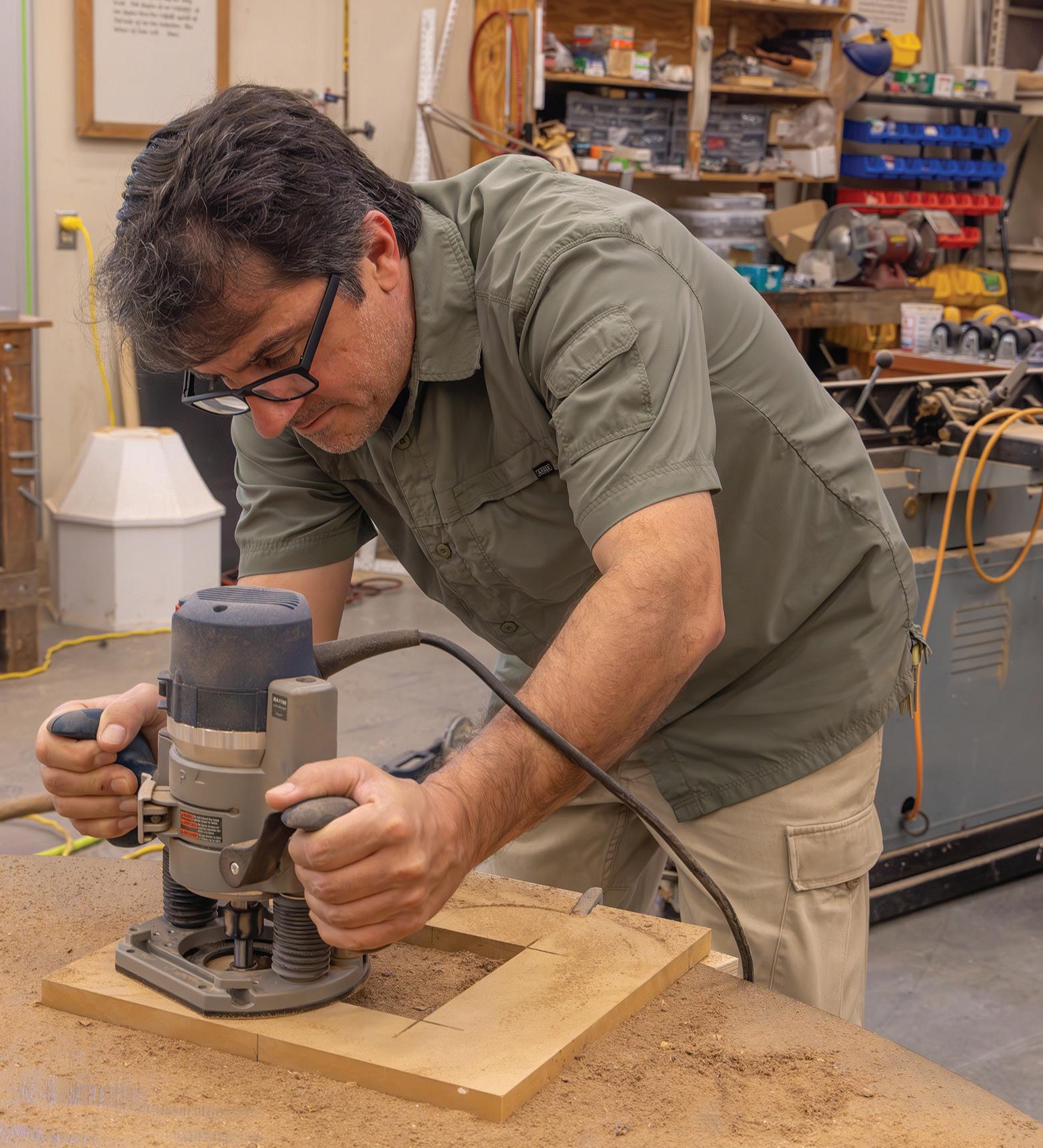
Sometimes, historical clothing tailors must consult a wide range of primary sources to inform their work. Beyond the Pocahontas portrait, for example, there is research to examine questions about the fabric, the parts of the garments not shown in the picture, construction of the clothing and more. Fortunately, additional court portraits show that the style of clothing was popular among English elite, including a 1617 painting of the Queen of Great Britain, Anne of Denmark, by Paul Van Somer. Better yet, there are two surviving loose gowns like the one Pocahontas is wearing in the Victoria and Albert Museum in London, which allowed Samantha to view the entire garment — front to back, inside and out — to uncover how it was made. The rebato collar has a surviving representative at the Metropolitan Museum of Art in New York. Vital information about the supporting wire frame for the lace rebato allowed Samantha and her team of tailors to re-create it.
Materials are a critical element of historical accuracy. Wool, silk and other fabric used in the re-creations are as close as possible to the originals. In the case of Pocahontas’s loose gown, the portrait shows a rich patterned material. Of the surviving original gowns, one is silk damask and one is cut velvet. The pattern on the portrait indicates that silk damask is more likely, which is wonderful since it is also a material that can be more easily obtained in the appropriate style.
The exhibit also highlights how clothing was made. It features projections showing the construction of the jack-of-plate, a 17th-century layered armor from England, based on one in the JYF collection. Implements, such as tailoring shears, chalk and measuring tape, allow exhibit guests to see the tools of the trade to craft historically accurate clothing.
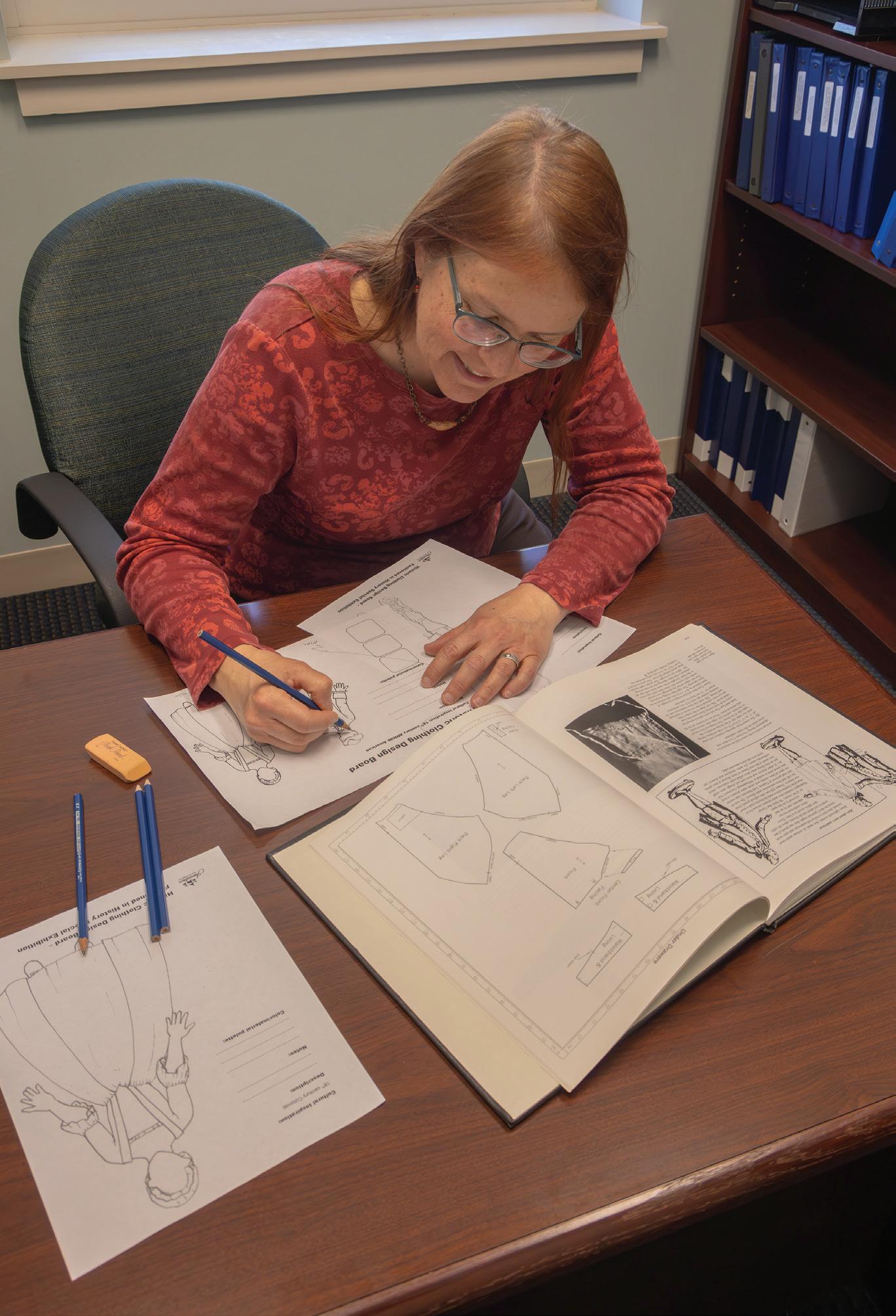 David Edquest in Exhibit Services (above) creates a hands-on texture table for the “Fashioned in History” exhibit, while Lara Templin in Gallery Experience sketches historical costumes for immersive design boards.
David Edquest in Exhibit Services (above) creates a hands-on texture table for the “Fashioned in History” exhibit, while Lara Templin in Gallery Experience sketches historical costumes for immersive design boards.
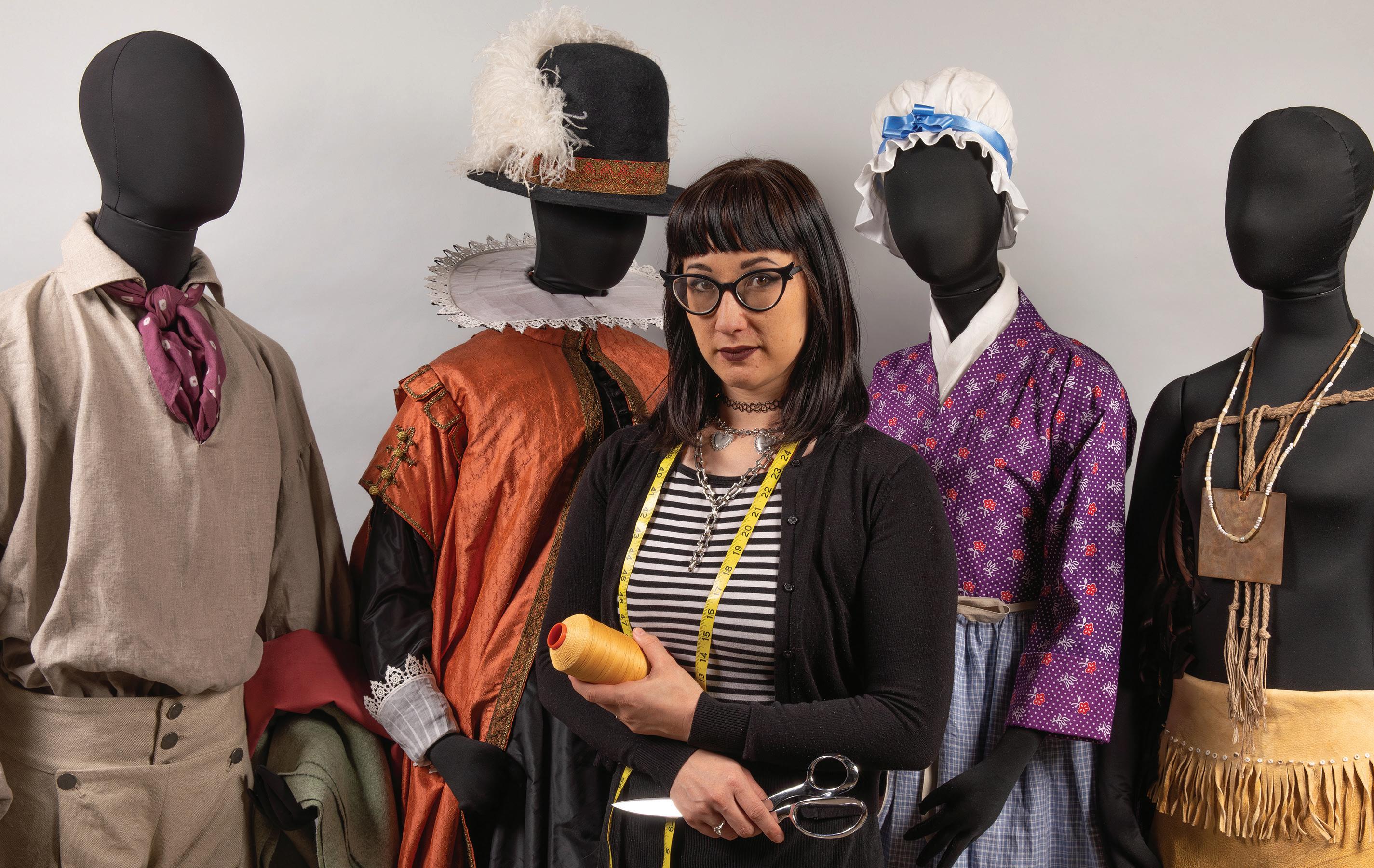
View videos of Samantha Bullat detailing the Jamestown-Yorktown Foundation historical clothing featured as part of the “Ruth E. Carter: Afrofuturism in Costume Design” special exhibition, on display at Jamestown Settlement through December 1, 2024.
Visitors also can participate in hands-on, tactile experiences to touch examples of the materials used in museum clothing and create a fashion design of their own, using templates, colored pencils and textured rubbings. These design boards created by guests can be left as part of the exhibit or taken home as a souvenir.
Rarely do visitors have the opportunity to see the work that takes place behind the scenes in the museum. The exhibit offers a glimpse of the historical research and contemporary skills and passion that our staff use to create dynamic visitor experiences.
—Lara Templin, Gallery Experience Manager
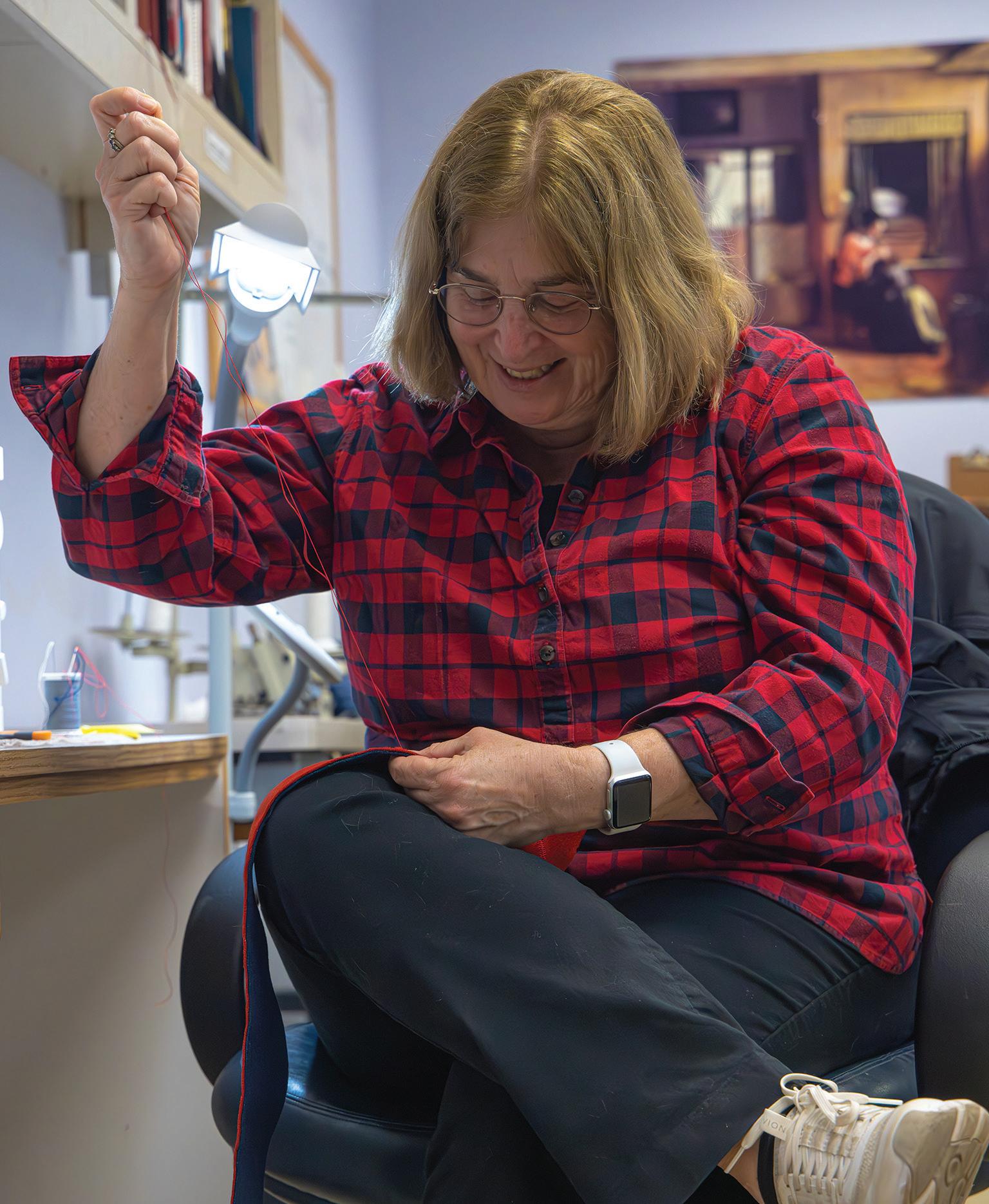 Many of JYF historical garments are hand sewn, one stitch at a time.
Many of JYF historical garments are hand sewn, one stitch at a time.

Historical Interpreter Sarah Raiford shares insight into garments of the past
Q: “Are you hot in that outfit?”
A: Of course, everyone is hot when it is 90 degrees outside. However, it is much cooler wearing layers of linen and a straw hat to keep off the sun than it is wearing 21st-century synthetic fibers.
Q: “Why did people from the past wear so many layers of clothing?”
A: People of European descent covered more skin before the invention of sunscreen, which had less to do with modesty and more to do with the fashion of keeping a pale complexion. Historically, people with a tanned complexion had to work outdoors and were therefore regarded as lower class. In terms of modesty, it was more scandalous in the 18th century for a woman to show her elbows than to show some cleavage. Wearing layers also allowed people to change and wash linens worn close to the body, like shifts, more frequently than outerwear.
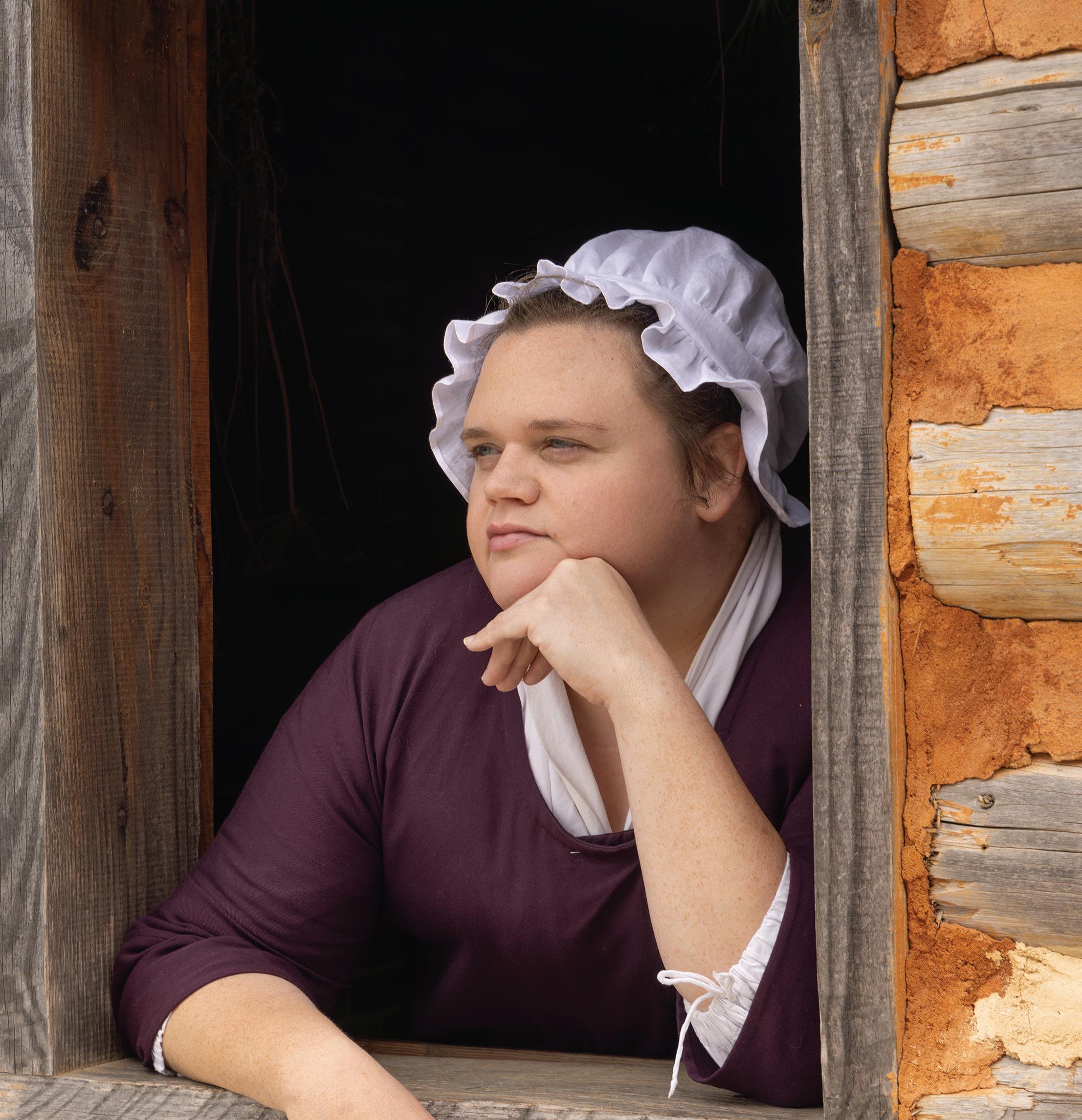
Q: “Why did women wear cloth caps back then?”
A: Women wore caps mostly for cleanliness. They lived in a time in which “hair-wash day” came infrequently. Hair coverings kept dirt, smoke and lice from lingering. As a 21st-century woman, I have found that wearing a cap absorbs excess oil in my hair and allows me to wash it less frequently. Indigenous women could accomplish the same effect by keeping their hair in braids. Historical accounts indicate that many Indigenous cultures had a higher standard of personal hygiene than Europeans and would therefore have less of a need to wear a cloth head covering. Wealthier European women in the 18th century did not always wear head coverings; instead, they would have their hair dressed professionally and only wore caps to accessorize their outfit.
Q: “You poor thing! They make you wear a corset? Why did women put themselves through that?”
A: The truth is, stays aren’t that bad! Most of the time, I find a well-fitted set of stays to be more comfortable than an underwire bra in today’s society. For working class women of the past, stays provided not only bust support, but much needed back support for the hard work of laundry, down-hearth cooking and other manual labor. I am much less fatigued and have less back pain after a day of manual labor in historical clothing than I am after a day of manual labor in 21st-century clothes. In the past, stays had the added benefit of providing the fashionable silhouette: a full bust, narrow waist and flared hips. For most of history, women have been seeking the physical standard of beauty, but it wasn’t until the 20th century that we started to surgically alter our bodies rather than our clothes.

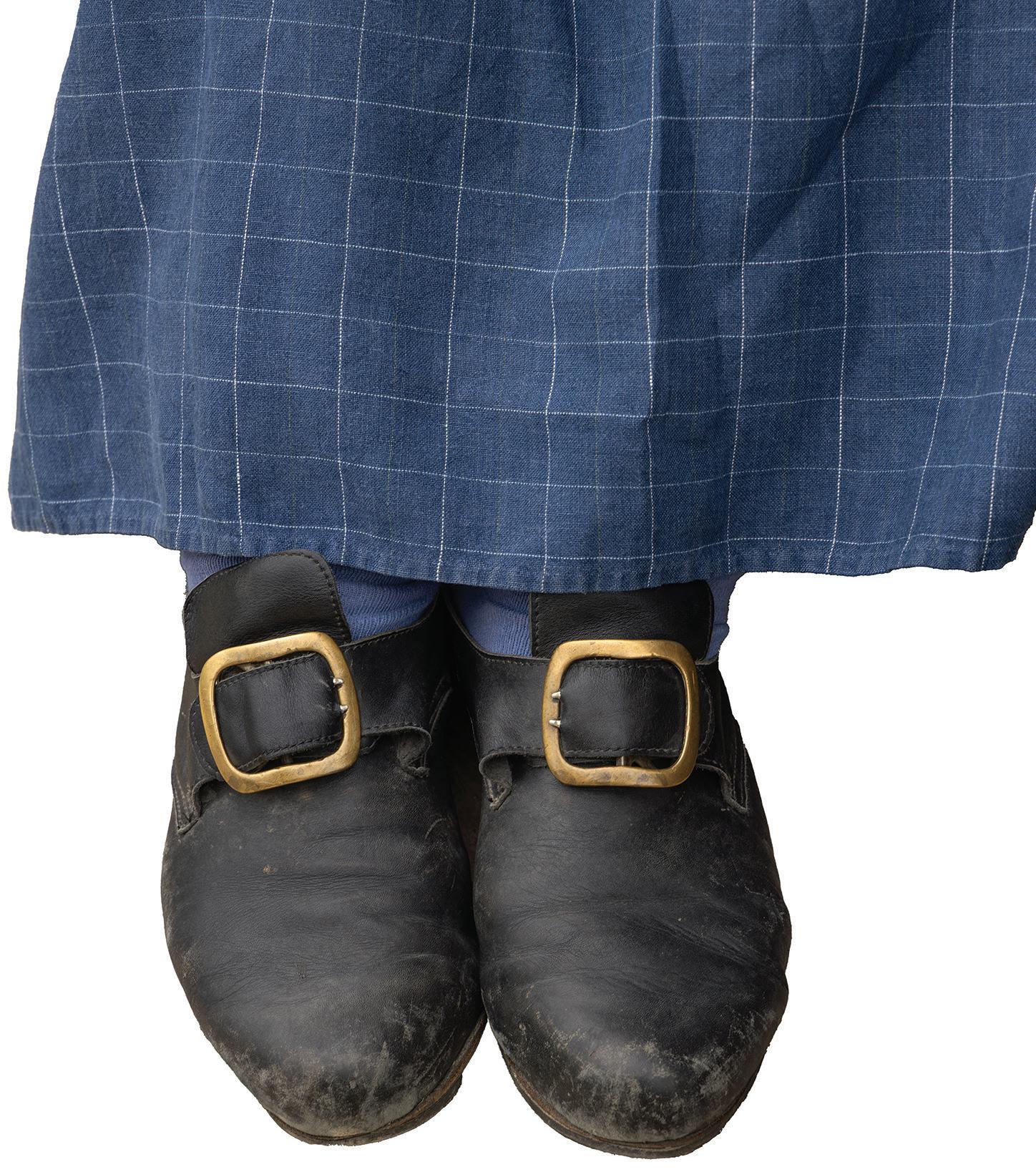
Q: “Look at those shoes! Are they comfortable?”
A: Absolutely not!
Sarah Raiford is site coordinator of the Revolution-era farm at the American Revolution Museum at Yorktown.Vestis virum facit — the clothes make the man. It is an old, hackneyed phrase, but resonates a great truth. In the world of historic sites and museums, the clothes worn by living-history interpreters or on display in the exhibition galleries help visitors see beyond the years to the people of the past, their lives and their societies. This is especially true when those visitors are students.
Clothes are one of the first outlets children have to express who they are. What parent has not given in to the child who wants to wear their sparkly play shoes to the muddy playground or their cowboy hat with their pajamas? Donning a costume allows a child to use their imagination to “become” another person. The same is true for historical clothing. Children connect with the past when they try on reproduction clothes, like those worn by an Indigenous person in 17th-century Tsenacommacah or a soldier during the American Revolution, or simply see people wearing them. Through guided exploration provided by JYF educators and interpreters, students are challenged to think about the individual who
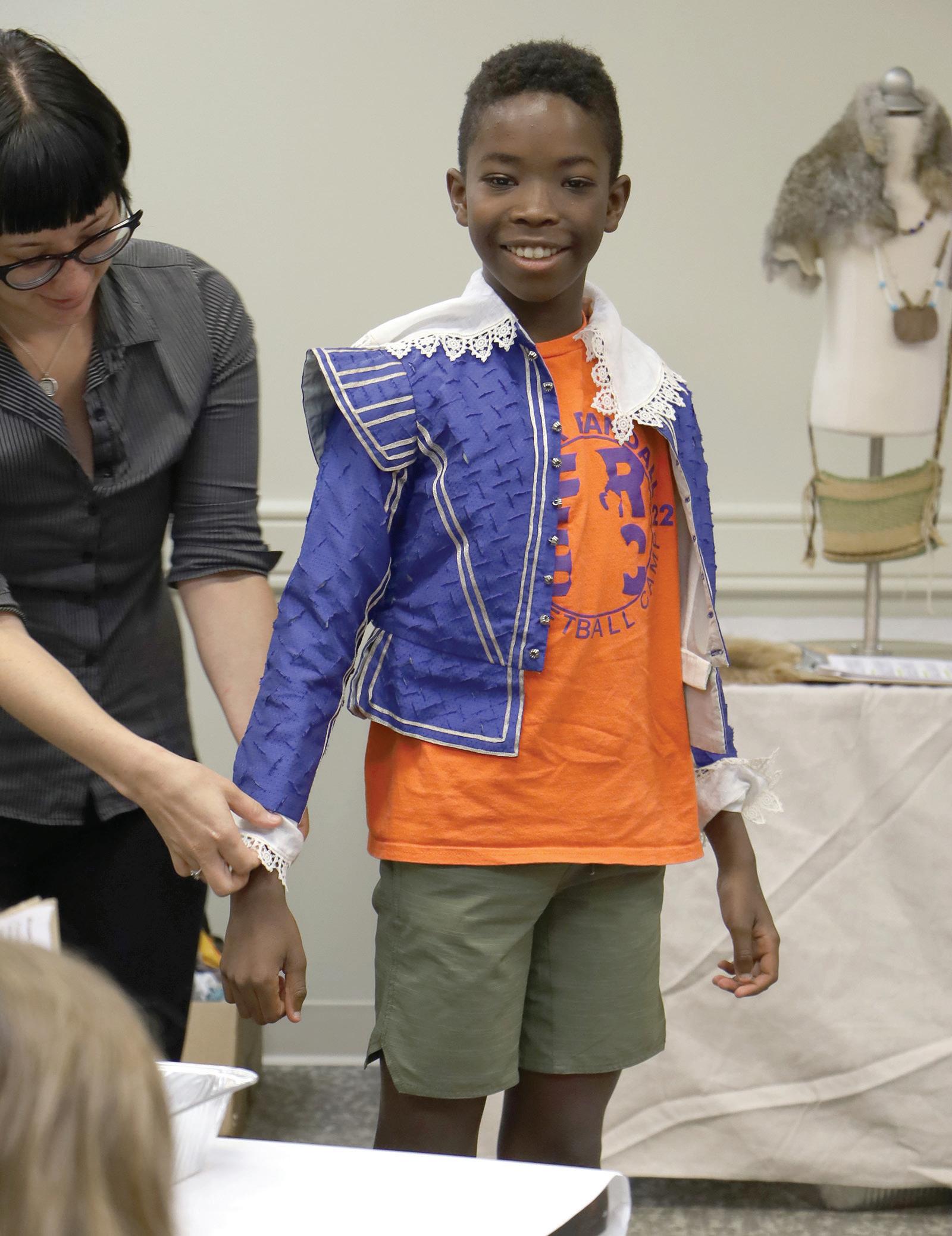
would have worn those clothes. What was their life like? What events were taking place around them and what was their role in these events? How did this person feel about them?
These questions are crucial to children developing historical empathy, the ability to understand people of the past and to explore their world and who they were in this period of history. The next time you see a child encounter historical clothing in a museum setting, be sure to take that imaginative journey with them. Think about what the clothing tells us about the person who wore it and about the times in which they lived. Think about their experiences and the impact they had as well as how they were impacted by their times.
—Anne Marie Baker, Teacher Programs Manager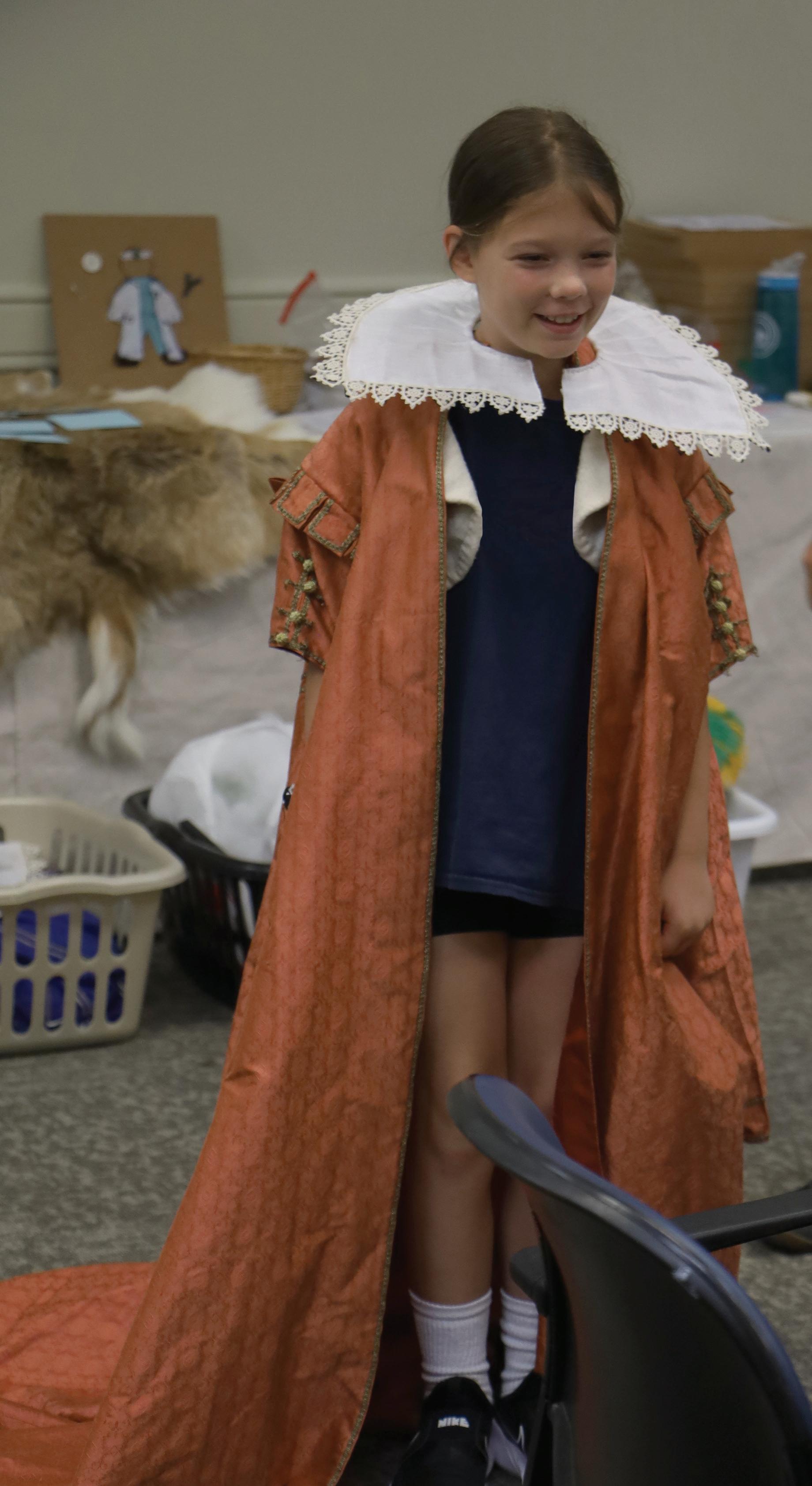
This year, children in JYF summer camps will learn how individuals of the past used clothing as an expression of identity and personalization. They will explore how the Powhatan people accessorized English clothing to create new fashions, how the uniforms of military units created cohesion during the Revolutionary War and how enslaved people wore the symbols of resistance to preserve and embrace their identities and heritage. By understanding the importance and meaning of clothing from the past, participants will be able to collaborate with other campers to consider and design their own outfits to communicate their identities.
—Felicia Abrams, School Programs ManagerIn 1784, the youthful Marquis of Lafayette paid a memorable visit to his friend and mentor, President George Washington, and his family. He enjoyed a warm reception at Mount Vernon before returning to France, continuing his mission to advance a more liberal form of government in his native country. There he served his fellow citizens in the National Assembly and drafted the foundational document for the French Revolution, which was published in 1791 as “The Declaration of the Rights of Man and of the Citizen.” Sadly, in the aftermath of the execution of King Louis XVI and the Reign of Terror that followed, Lafayette’s family suffered ruin, rejection and years of imprisonment.
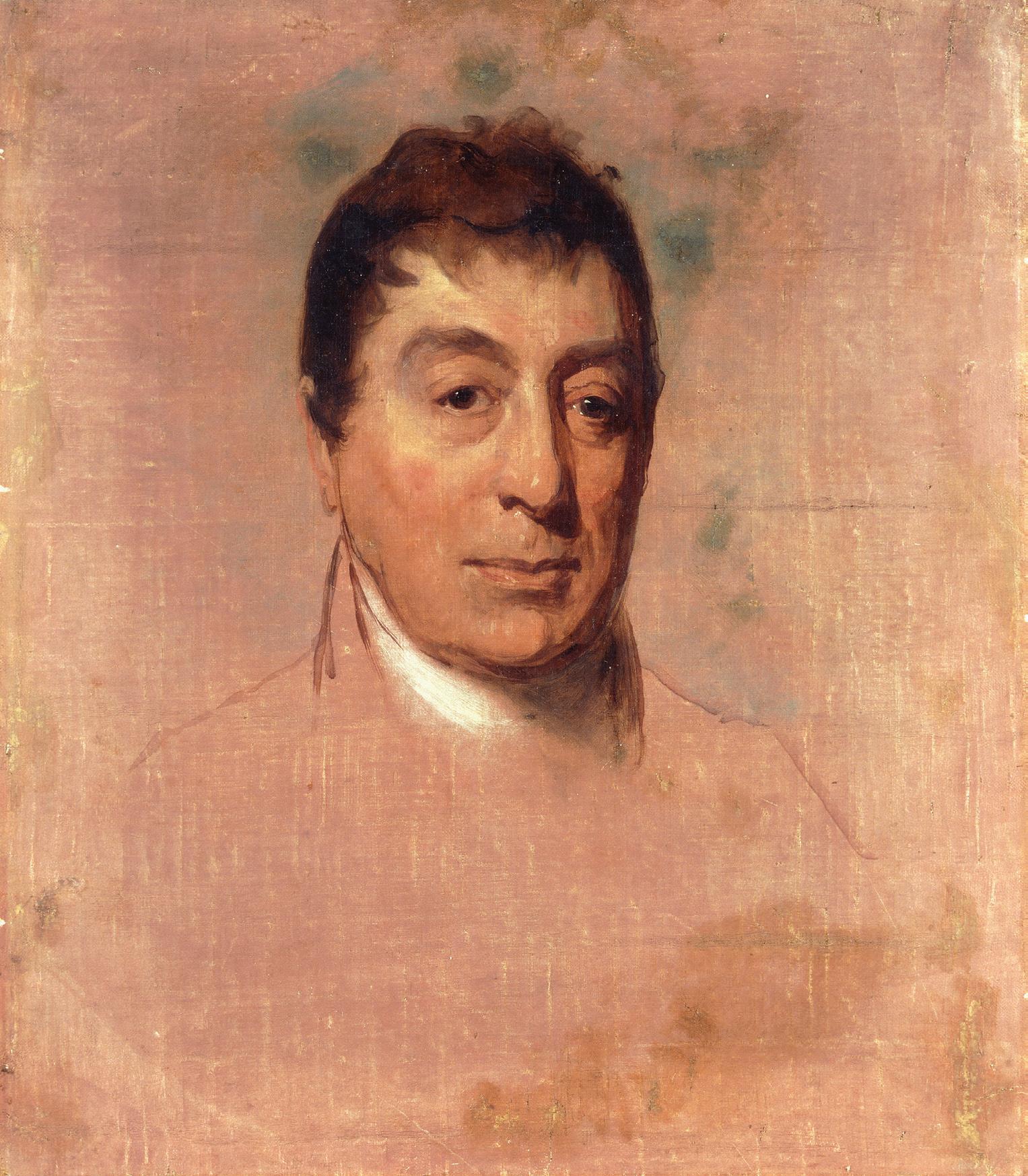
feelings throughout the country during those 13 months of travel. He was treated as a national treasure, with countless pageants and receptions held in his honor. In every locale he was greeted with accolades, ovations and parades that showed a nation’s gratitude for his service during the Revolutionary War. Ever a defender of democratic ideals until his death in 1834, Lafayette was also an active supporter of the abolition of the slave trade and urged the Virginia government to manumit his Black manservant, James Armistead Lafayette.

Forty years later, in 1824-25, the Marquis of Lafayette made his final visit to America at the invitation of the U.S. Congress and President Monroe, receiving a hero’s welcome in all 24 states in the union. As the last surviving general to have fought in the American Revolutionary War, his presence in American neighborhoods reignited patriotic
Lafayette’s 1824-25 tour of America is memorialized by the portraiture and commentary in the American press and in private letters written at this time. These speak to the excitement generated in ordinary American communities by the physical presence of this heroic figure in their neighborhood. He visited Jamestown and Yorktown on his way to Norfolk on October 22, 1824.
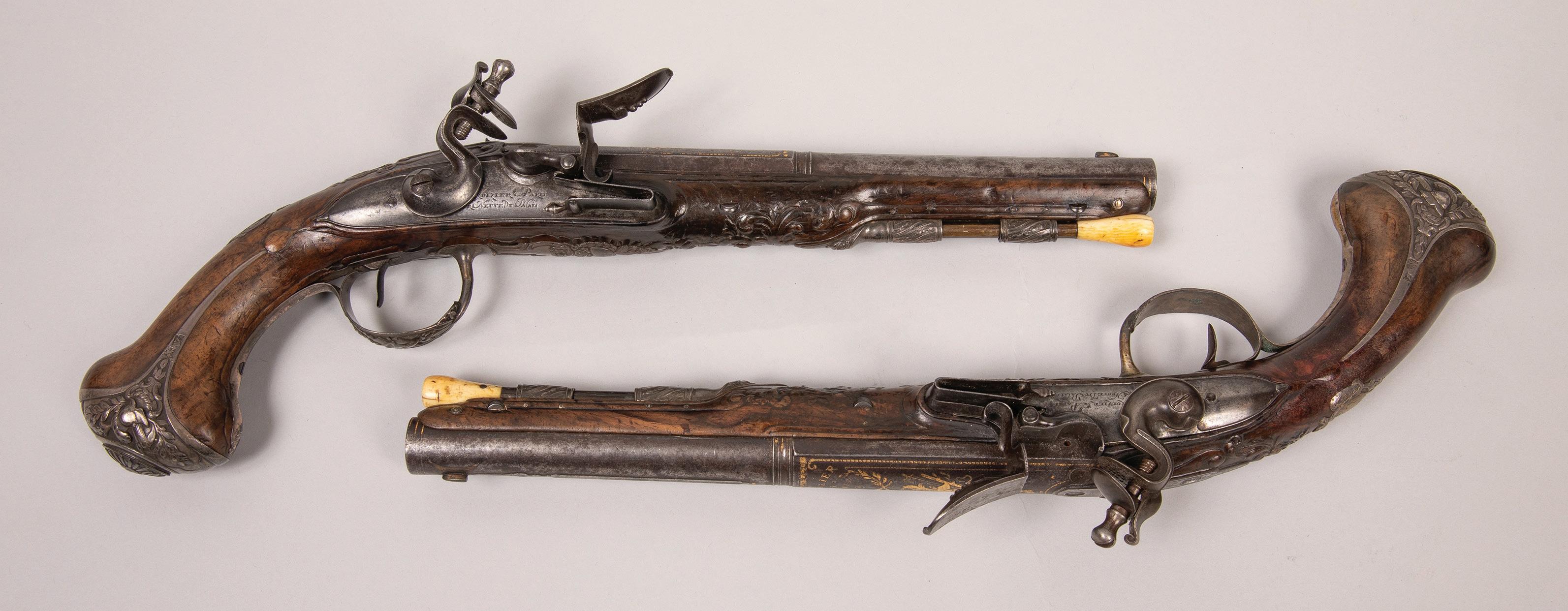
The American Revolution Museum at Yorktown features holster pistols belonging to the Marquis de Lafayette, Jean-Baptiste Croizier, Paris, 1776. Jamestown-Yorktown Foundation JYF2017.2.1-2

Lafayette sought glory in the fight for American independence and his generosity was legendary. He gave each of his fellow American officers a fine French sword known as an epée. To the doctor who treated his wound and illness in Pennsylvania, Lafayette bestowed a pair of silver-mounted French flintlock pistols bearing the retailer’s name, Jean Croizier, on their barrel and lockplate. The silver ornament includes the silver cartouche incised with the Lafayette armorial insignia and bears marks for manufacture in Paris in 1776. The barrel maker’s markings are for Jean Nicolas Le Clerc. These pistols, a gift from Mrs. Leslie O. Lynch, Jr., are proudly shown in the main gallery of the American Revolution Museum at Yorktown.
—Sarah Meschutt, Ph.D., Senior Curator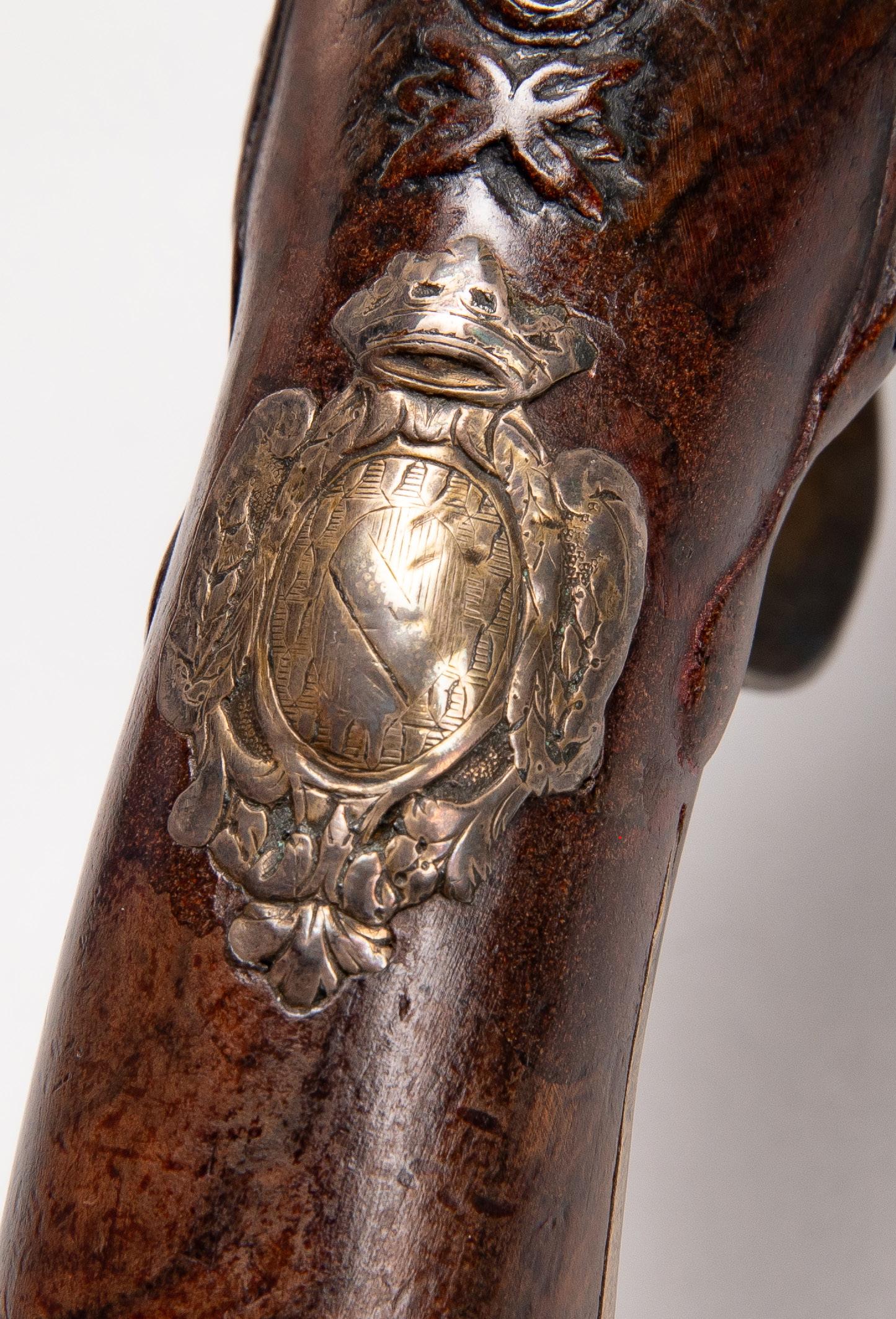

Celebrations across 24 American states will mark the bicentennial of French General Marquis de Lafayette’s return to America in 1824 as a “guest of the Nation,” featuring a stop in Yorktown for the annual Yorktown Victory Celebration festivities on October 17-20.
American and French flags will wave red, white and blue, symbolizing the significance of the American and French alliance that effectively secured American independence on October 19, 1781, at Yorktown.
Commemorating the 200th Anniversary of the Marquis de Lafayette’s Grand Tour of America in 1824
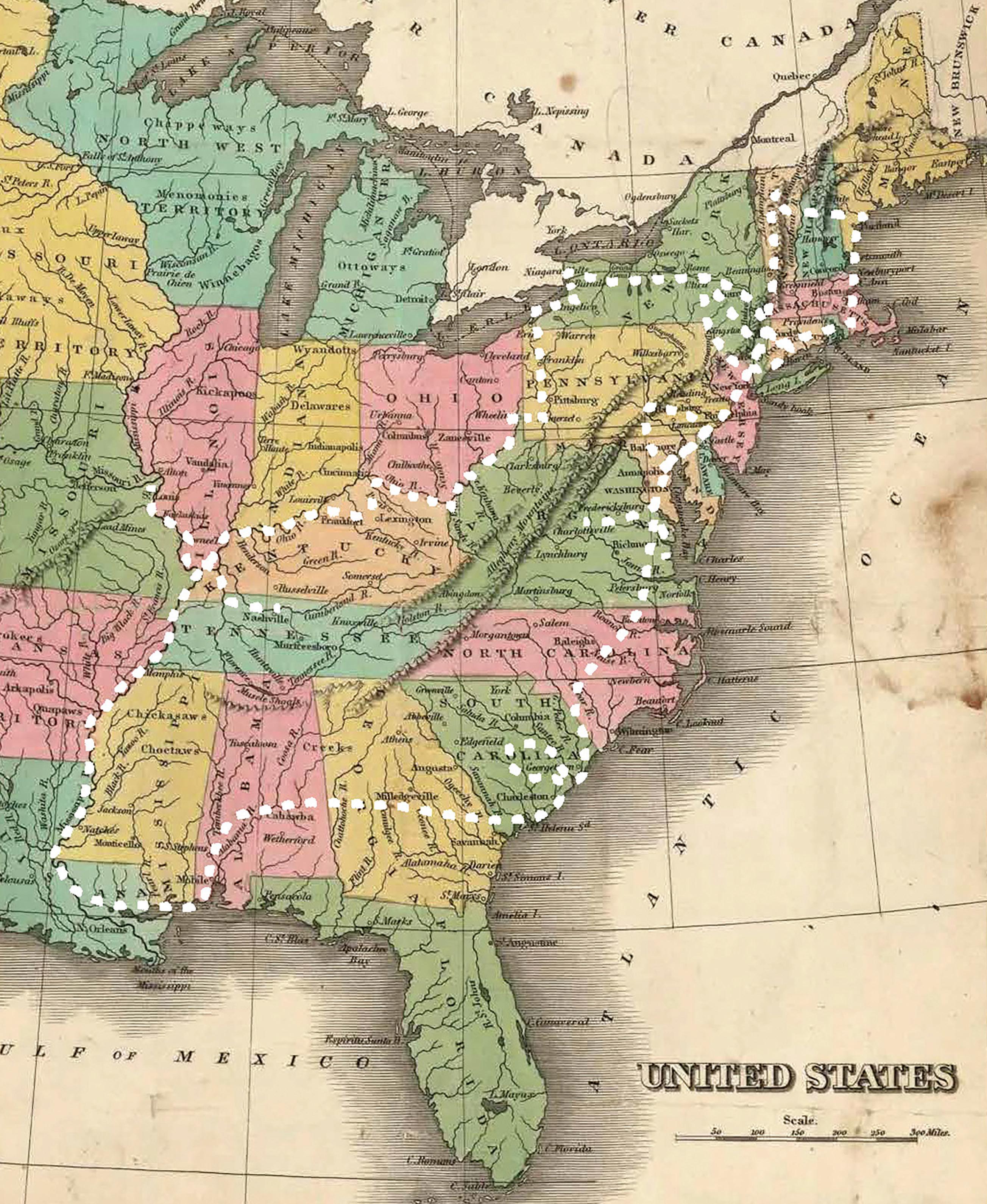
The
In 1824, Lafayette’s return comprised visits to all 24 states and with all surviving presidents, according to The American Friends of Lafayette, which is presenting the 24-state tour in partnership with the Daughters of the American Revolution, Sons of the American Revolution, America 250, the Virginia American Revolution 250 Commission and the Yorktown 250th Commemoration Committee.
In Yorktown, America’s decisive Revolutionary War victory at Yorktown and Lafayette’s Grand Tour commemoration will be celebrated with a multiday salute of events and activities at the American Revolution Museum at Yorktown, Yorktown Battlefield and Historic Yorktown leading to Yorktown Day commemorative events on October 19.
The Jamestown-Yorktown Foundation is partnering with Historic Yorktown, the National Park Service and the Waterman’s Museum to present a series of programs in Yorktown to salute this pivotal anniversary.
In addition to wreath-laying ceremonies, Yorktown Day on October 19 will feature the patriotic Yorktown Day Parade on Main Street and will be followed by the official commemorative ceremony with patriotic exercises at the Monument to Victory and Alliance, also known as the Yorktown Victory Monument.
A special traveling exhibit by The American Friends of Lafayette will be on display at the American Revolution Museum at Yorktown in June and October.
To learn more, visit Lafayette200.org and jyfmuseums.org/yorktown-victory-celebration.
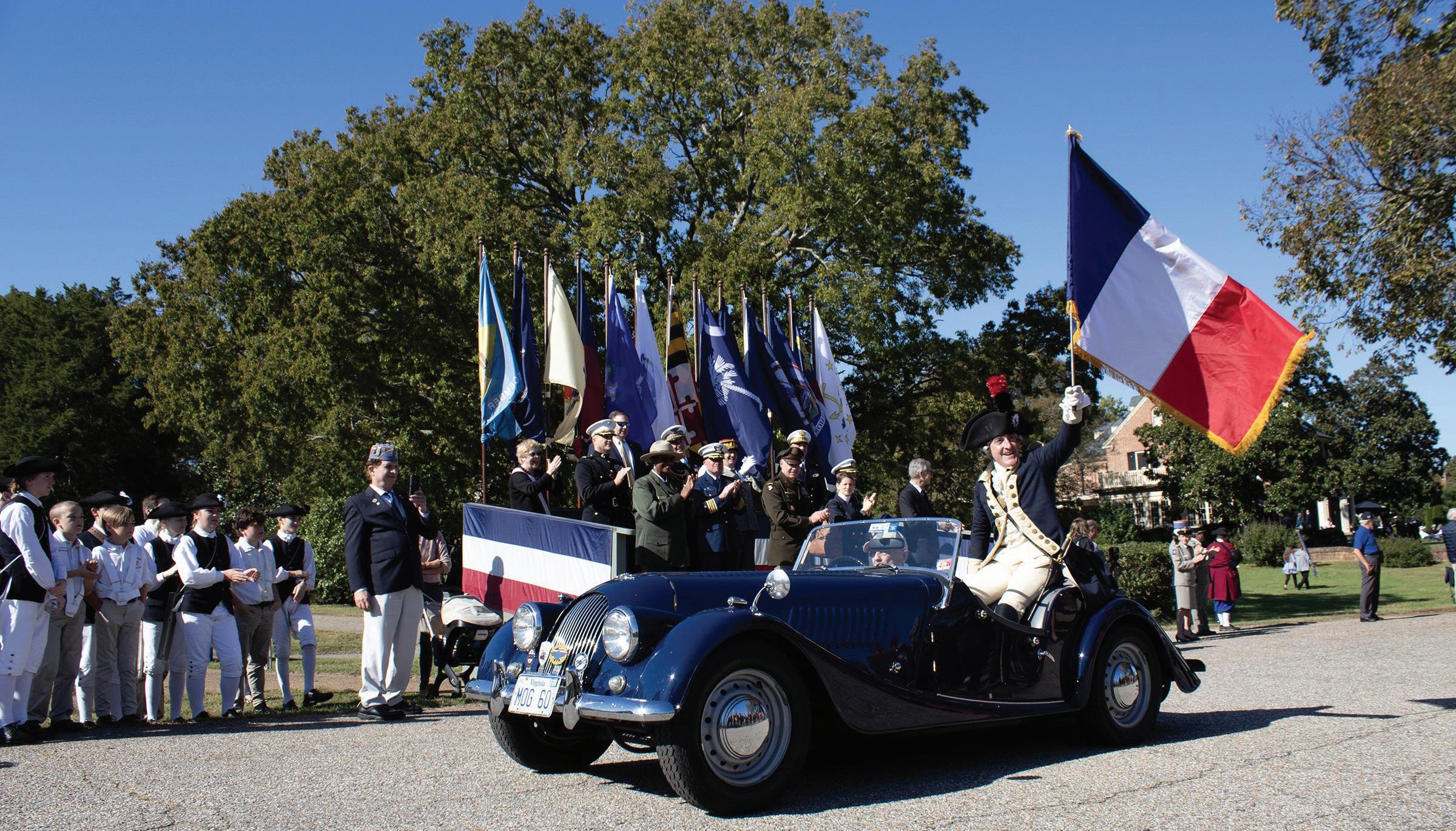
Historian Mark Schneider, The Colonial Williamsburg Foundation’s Marquis de Lafayette Nation Builder, will appear as General Lafayette during this year’s Lafayette Grand Tour celebrations, including the Yorktown Day Parade on October 19.
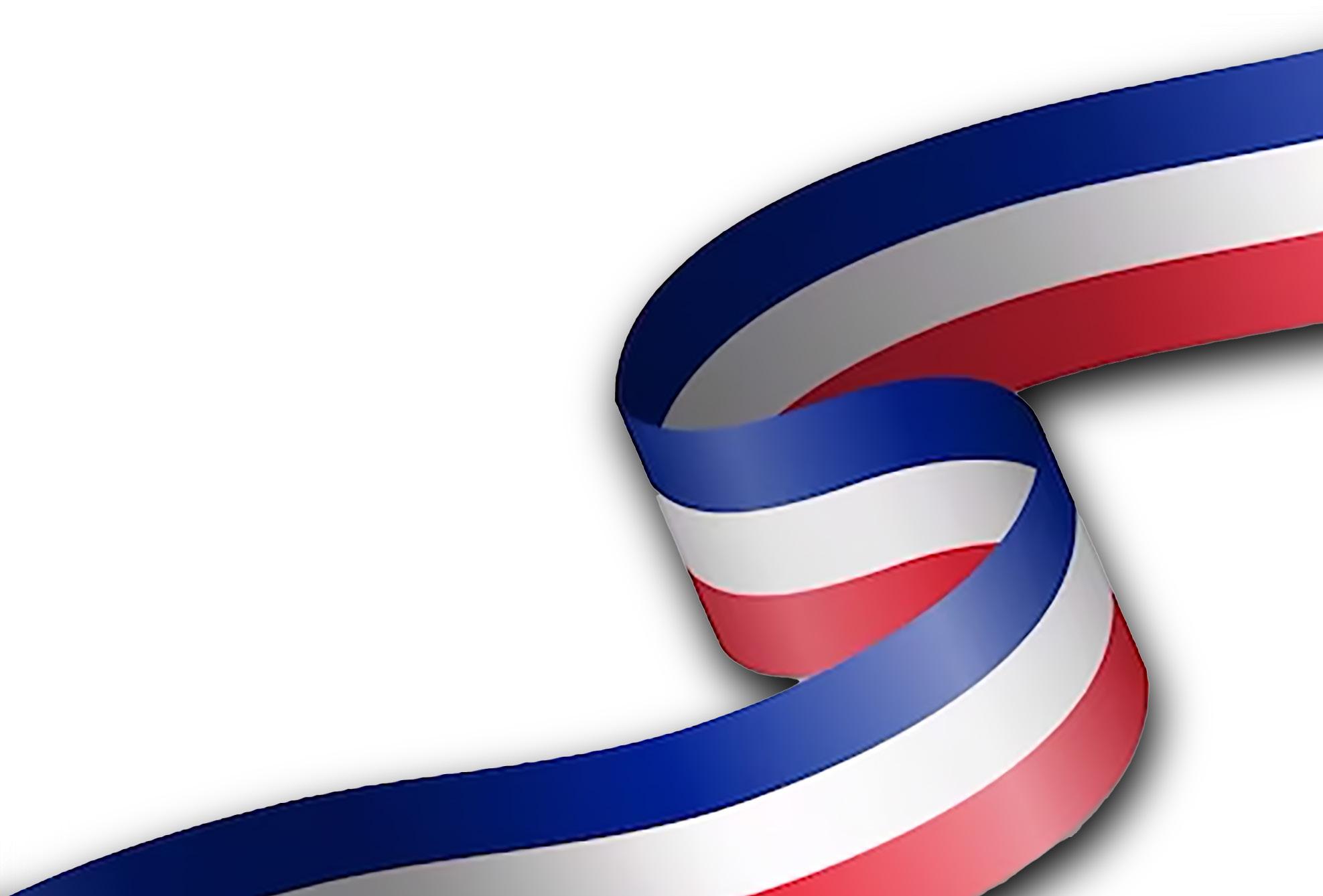
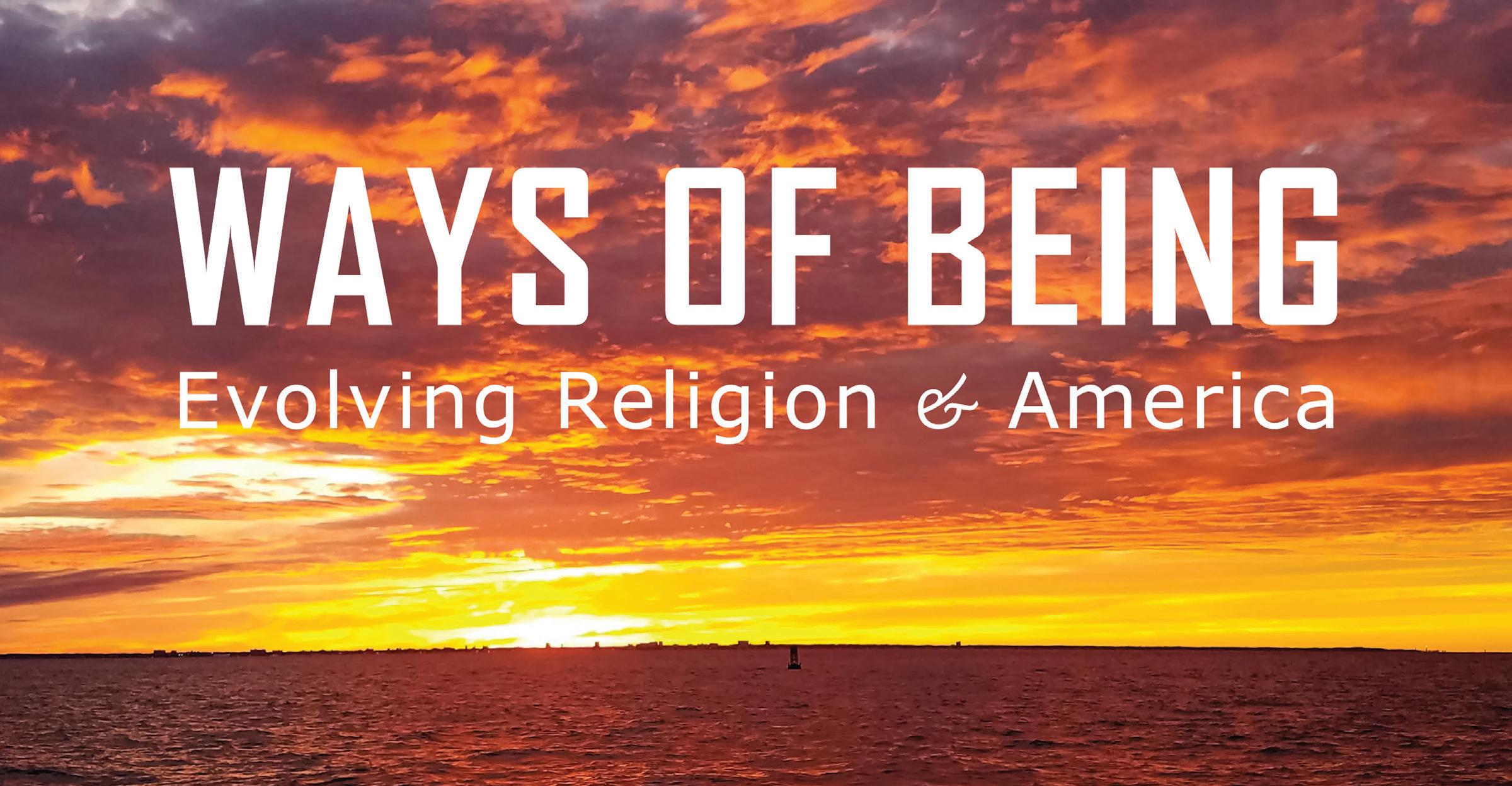
The Jamestown-Yorktown Foundation publicly launched its new Religion and Early America initiative, funded by the Lilly Endowment’s Religion and Cultural Institutions Initiative, on May 31 and June 1 with a symposium, “Ways of Being: Evolving Religion and America.” The inaugural symposium brought together religion scholars, museum professionals and community members to explore the role of religion in early America and connections to the present day.
Keynote panel conversations and content sessions examined religion, spirituality, beliefs and the lived experiences of Indigenous peoples, Africans and Europeans who converged under European colonialism in early America.
Acknowledging that differing cultural concepts of religion had far-reaching impacts on the social, political and economic lives of all three cultural groups, symposium speakers and participants explored how the legacies of the cultural responses to these impacts are reflected in the societal fabric of America today.
With the support of the Lilly Endowment, a diverse group of scholars and public historians shared their research and viewpoints, including scholars from the University of North Carolina, Chapel Hill, Sewanee: The University of the South, the Smithsonian’s National Museum of African American History and Culture, Missouri State University, Oberlin College, Princeton University and The Colonial Williamsburg Foundation. Alongside academics and public historians, local faith leaders considered the enduring impact of early America on religion today.
Symposium sessions explored topics including Black religious thought in early America, Catholic devotional objects from 17th-century Jamestown, Indigenous experiences with missionaries, women’s work and religious domesticity, religion outside the church building, Muslims in America, Jewish life in early America and imperial Protestantism in North America.
This symposium marks the beginning of the multiyear Religion and Early America initiative for the Jamestown-Yorktown Foundation, which is designed to provide audiences with a better understanding of the role of religion in early America and uses the lens of religion to examine our shared history and its legacies today, engaging audiences in dialogue about religion’s role in early America and sparking empathy by demonstrating the importance of multiple perspectives.
—Mariruth Leftwich, Ph.D., Senior Director of Museum Operations & EducationMuseums and libraries share a common mission: they inspire curiosity, foster lifelong learning and facilitate community enrichment. When they join forces, they amplify their impact by democratizing access to education and our shared culture.
This year, JamestownYorktown Foundation is partnering with regional libraries for two special programs.
In April, the School Programs team worked with Williamsburg Regional Library to provide hands-on engagement supporting a special “I Survived” book series day. Educators Julie Fox and Catherine VanDyke brought “I Survived the American Revolution, 1776” to life, sharing the history of the period by facilitating artifact analysis and telling personal stories of people who witnessed this tumultuous time in history.
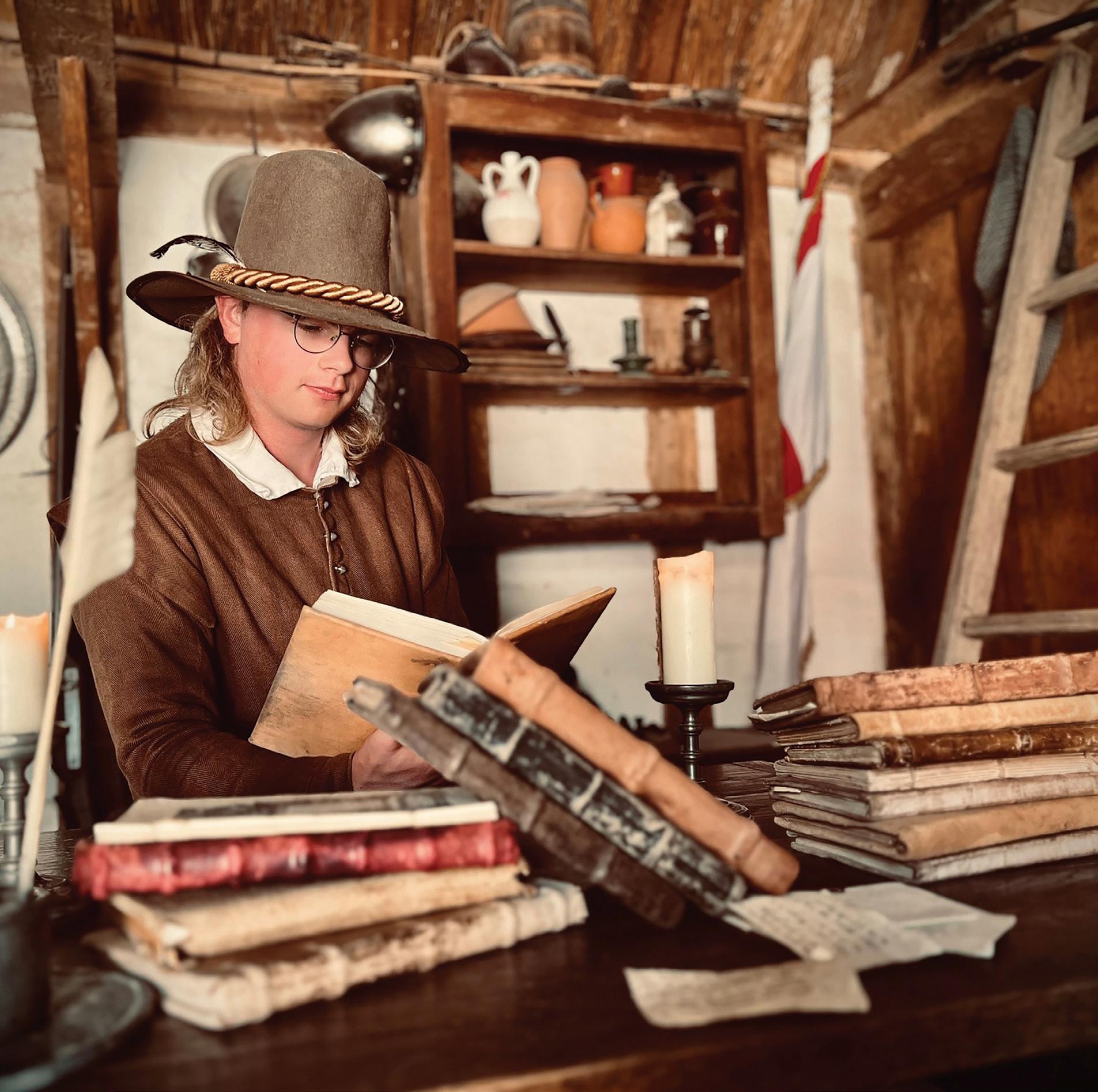
On August 3, Jamestown-Yorktown Foundation will partner with library systems from around the Tidewater region to offer their patrons access to Jamestown Settlement. Coordinated through Chesapeake Public Libraries, patrons can show their library card for free admission to the museum. The day will include special storytelling programming presented by JYF educators and area librarians.
Both museums and libraries provide dynamic learning environments where visitors engage in an interdisciplinary approach to education. By partnering, they are not just sharing resources. They are enriching lives, fostering cultural understanding and building stronger communities for generations to come.
—Felicia Abrams, School Programs ManagerCombining a nod to history with a dash of wit, the graphic tees shown here are literal style statements. Each is matched with companion pieces that further convey the wearer’s personality.
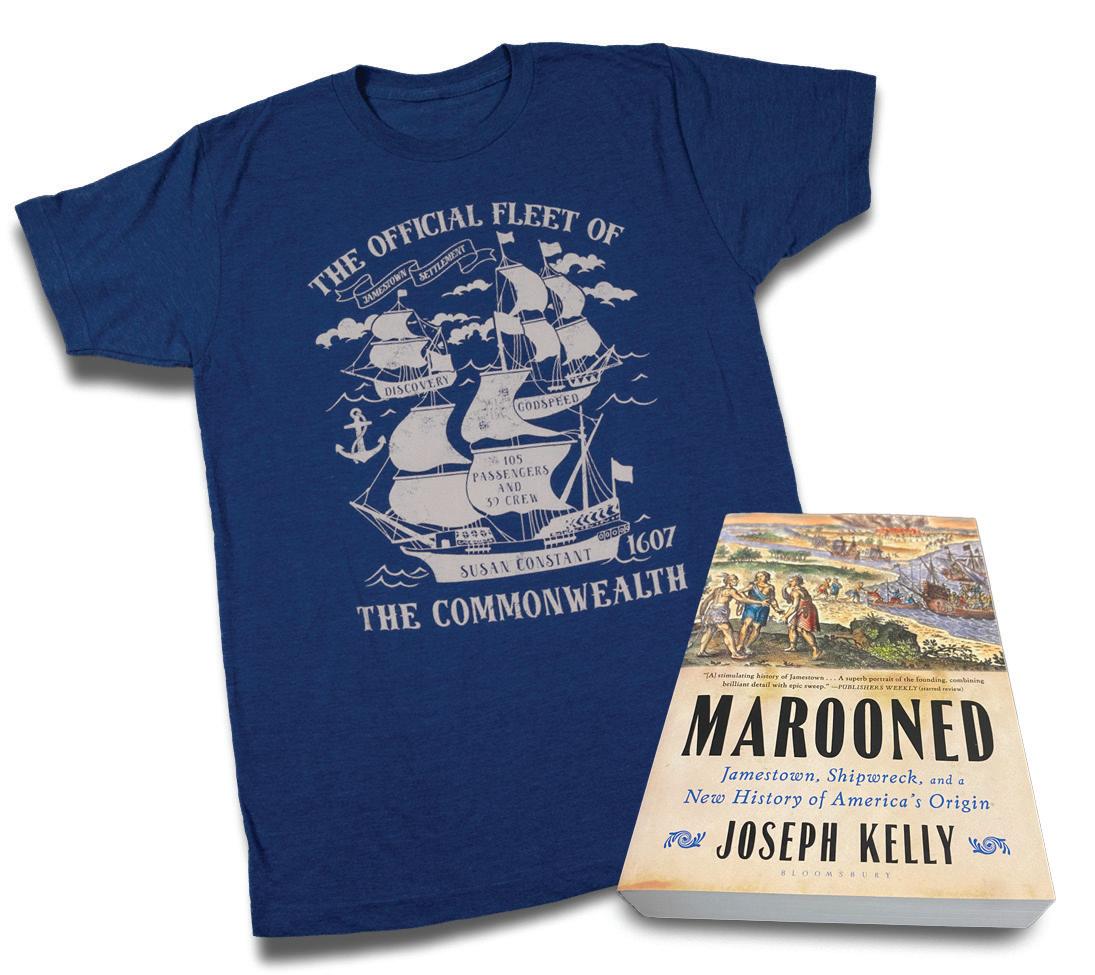
This tee shirt graphic features the replicas of the three ships, Susan Constant , Godspeed, and Discovery, in a turbulent sea to commemorate the 2001 designation as Virginia’s “Official Fleet of the Commonwealth ”
From Bloomsbury Publishing: “Marooned: Jamestown, Shipwreck, and a New History of America’s Origin” by Joseph Kelly. The epic origin of America was not an exodus and a fledgling theocracy. It is a tale of shipwrecked castaways of all classes marooned in the wilderness fending for themselves in any way they could — a story that illuminates who we are as a nation today.
Borrowed from the title of the book by Laurel Thatcher Ulrich, the tee features “Well-behaved Women Seldom Make History, ” framed in a stylized antique gold design featuring abundant flourishes, regal silhouettes, and, of course, a queen’s crown.
From Arcturus: “The Kings and Queens of Britain” In this beautifully illustrated book, Cath Senker delves into the extraordinary history of the British monarchy and its host of kings, queens and pretenders.

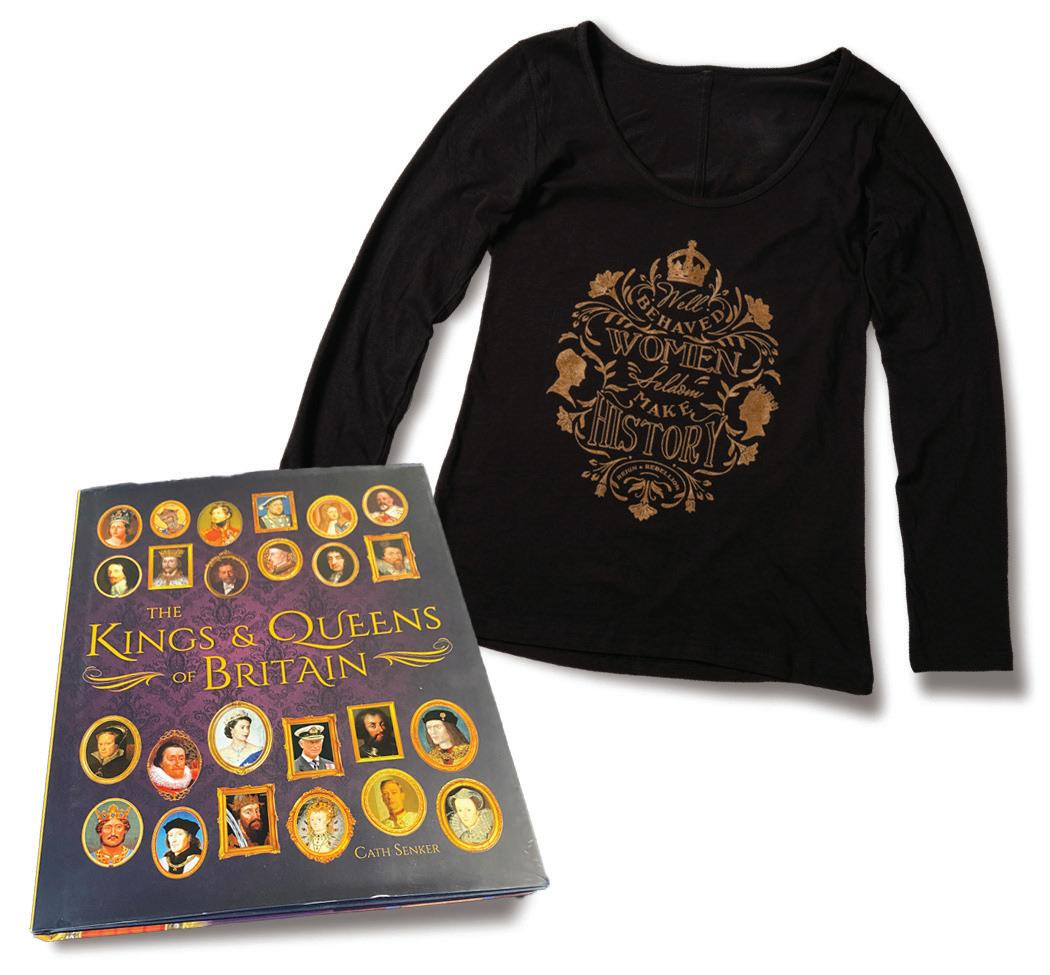
“When angry, count to ten before you speak; if very angry, count to one hundred.” Quoted from a letter written by Thomas Jefferson to Thomas Jefferson Smith, dated February 21, 1825.
The “JOIN OR DIE” flag cap refers to the “Join, or Die” political cartoon attributed to Benjamin Franklin and published in his paper, The Pennsylvania Gazette, on May 9, 1754. Created on the eve of the French and Indian War, the cartoon called for unity among British colonies against the French. During the American Revolution, the original cartoon and variations became important symbols of unity in support of Independence.
From Penguin Books: “American Colonies” by Alan Taylor, a multicultural, multinational history of colonial America from the Pulitzer Prize-winning author of “The Internal Enemy” and “American Revolutions.”
“...A sensible woman can never be happy with a fool.” This ladies’ tee design captures the wise guidance provided by George Washington to his step-granddaughter, Eleanor Parke Custis, in a letter dated March 21, 1796.
From Candlewick Press, the book “Leading the Way: Women in Power” is an engaging and highly accessible compendium for young readers and aspiring power brokers. Virginia Senator Janet Howell and her daughter-in-law Theresa Howell spotlight the careers of 50 American women in politics — and inspire readers to make a difference.
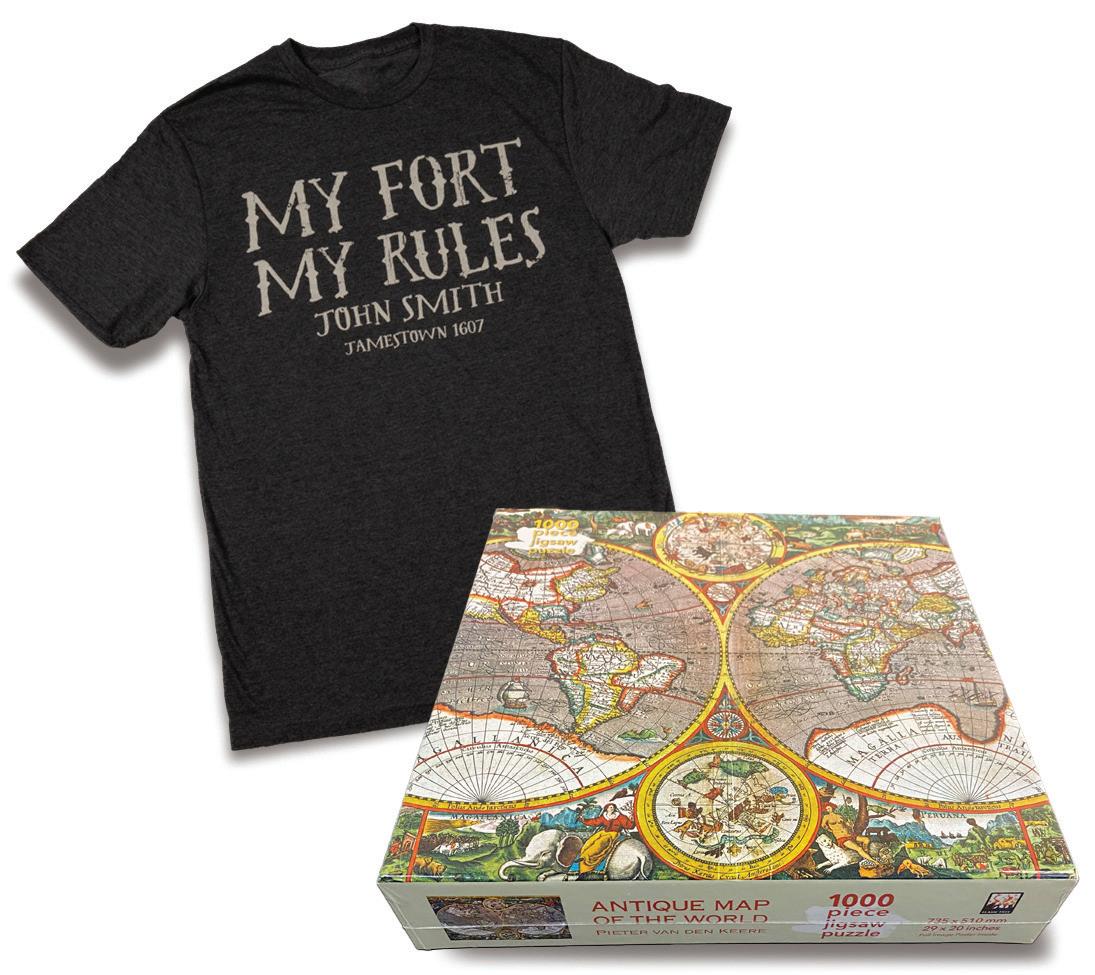
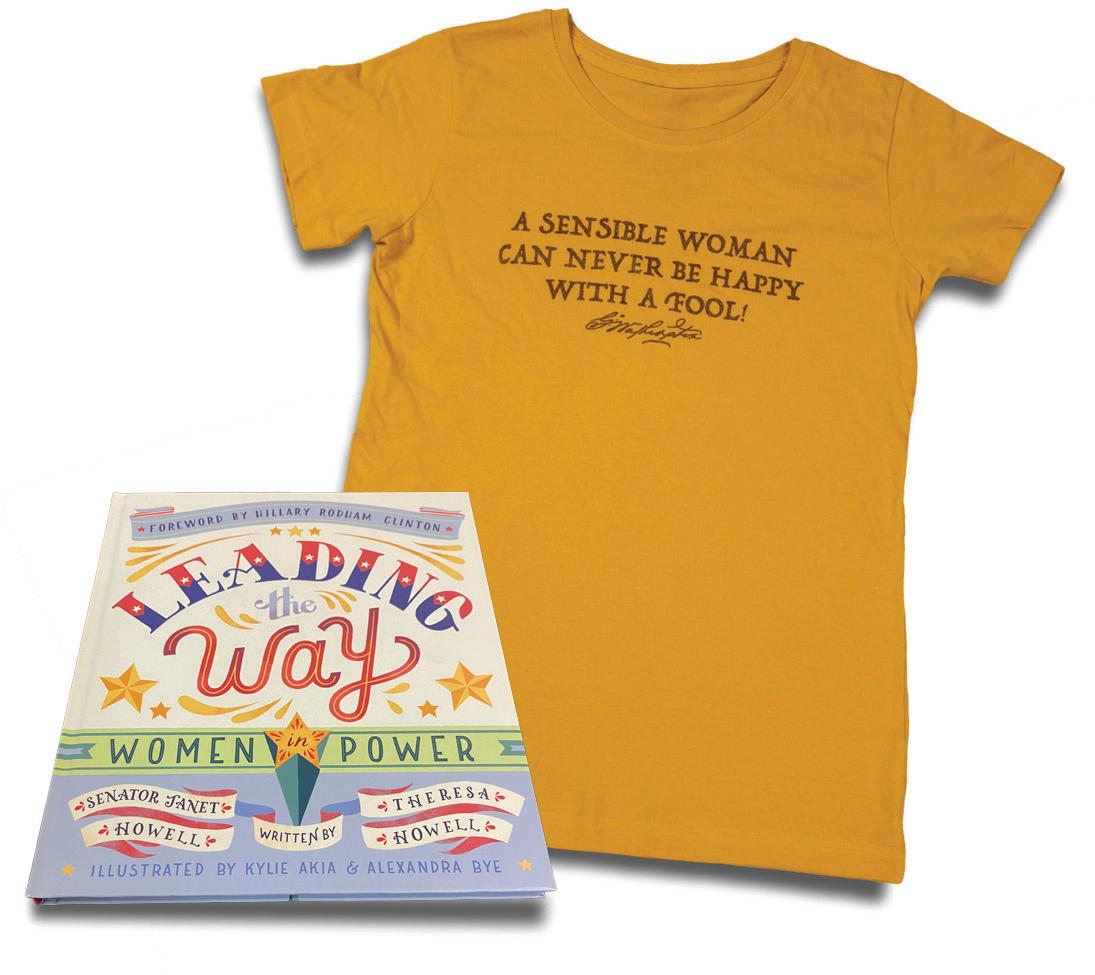
“MY FORT MY RULES” — cheekily attributed to John Smith, this graphic tee conveys a 17th-century sentiment with a 21st-century attitude.
From Flame Tree Publishing, this 1000-piece puzzle is the Antique Map of the World by Flemish engraver, Pieter van den Keere, which was based on a 1594 world map by Petrus Plancius. Plancius was a notable figure of the Netherlandish school of cartography and geography in the 16th and 17th centuries.
“Could I bee any cuter?” Whimsical design for little girls makes a sweet statement about the honeybee, recently named Official Pollinator of the Commonwealth of Virginia.
From Laurence King Publishing, Beehive Mancala: Based on the ancient gameplay of mancala, Beehive Mancala is a fun strategy game for adults and children aged 6+. Includes facts about the bees and flowers featured, plus details on the honey-making process and the importance of bees from the beekeeper at the Royal Botanic Gardens, Kew. All apparel items shown are JYF exclusives. All items can be found at the Museum Shops at Jamestown Settlement and the American Revolution Museum at Yorktown.
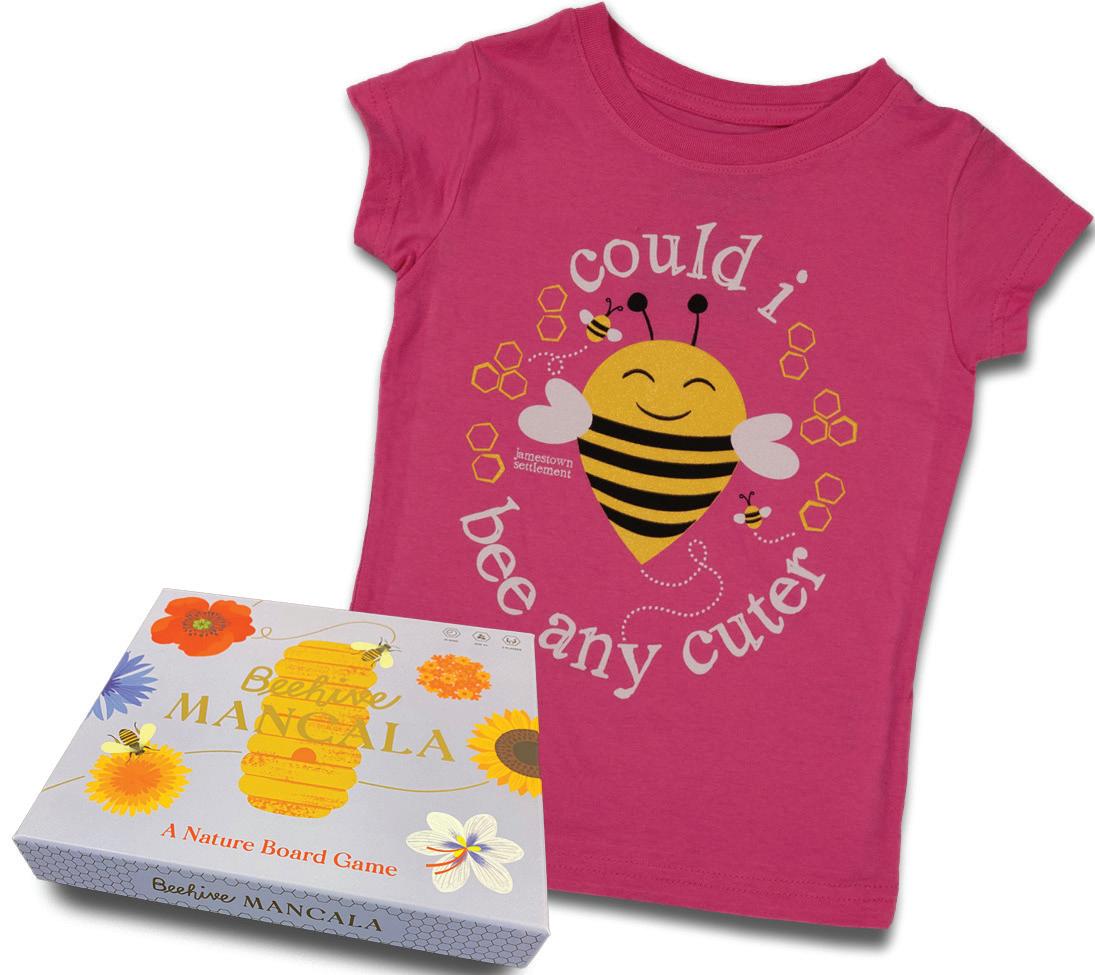
“Musicians don’t retire; they stop when there’s no more music in them.” – Louis Armstrong
Jari Villanueva served with the United States Air Band in Washington, D. C. from 1985 to 2008 as a ceremonial trumpeter, bugler and staff arranger. While he retired from the Air Force as a master sergeant, he has no intention to relinquish his love of music.
Villanueva established Taps Bugler, which provides buglers for the funerals of American veterans, during the Civil War sesquicentennial to commemorate the first sounding of Taps at Berkeley Plantation in 1863. He then formed the Federal City Brass Band to share Civil War period music played with original instruments throughout the sesquicentennial.
In March, he organized a contemporary iteration of General John “Black Jack” Pershing’s American Expeditionary Forces Headquarters Band to perform World War I music at Jamestown Settlement’s annual Military Through the Ages event. The AEF band is sponsored by the Doughboy Foundation, the organization that oversees the National World War I Memorial in Washington, D. C. The World War I memorial is dedicated — and pays tribute — to the 4.7 million Americans who served during World War I.
Pershing ordered a music school set up in Chermont, France, for the training of bandmasters and musicians to put together a special, elite band made up of all the best musicians in the army stationed in France at that time.
During military ceremonies in Chermont, the AEF Headquarters Band were regarded as the best band the U.S. Army had to offer. They became known as “Pershing’s Own.”
As U.S. Army chief of staff in 1922, General Pershing decided that there should be an elite organization in Washington representing the United States Army through music. He issued a one-line order for the training and equipment of the U.S. Army Band.
“I’ve been blessed working with some really terrific people and fabulous musicians. My degree is in music education.
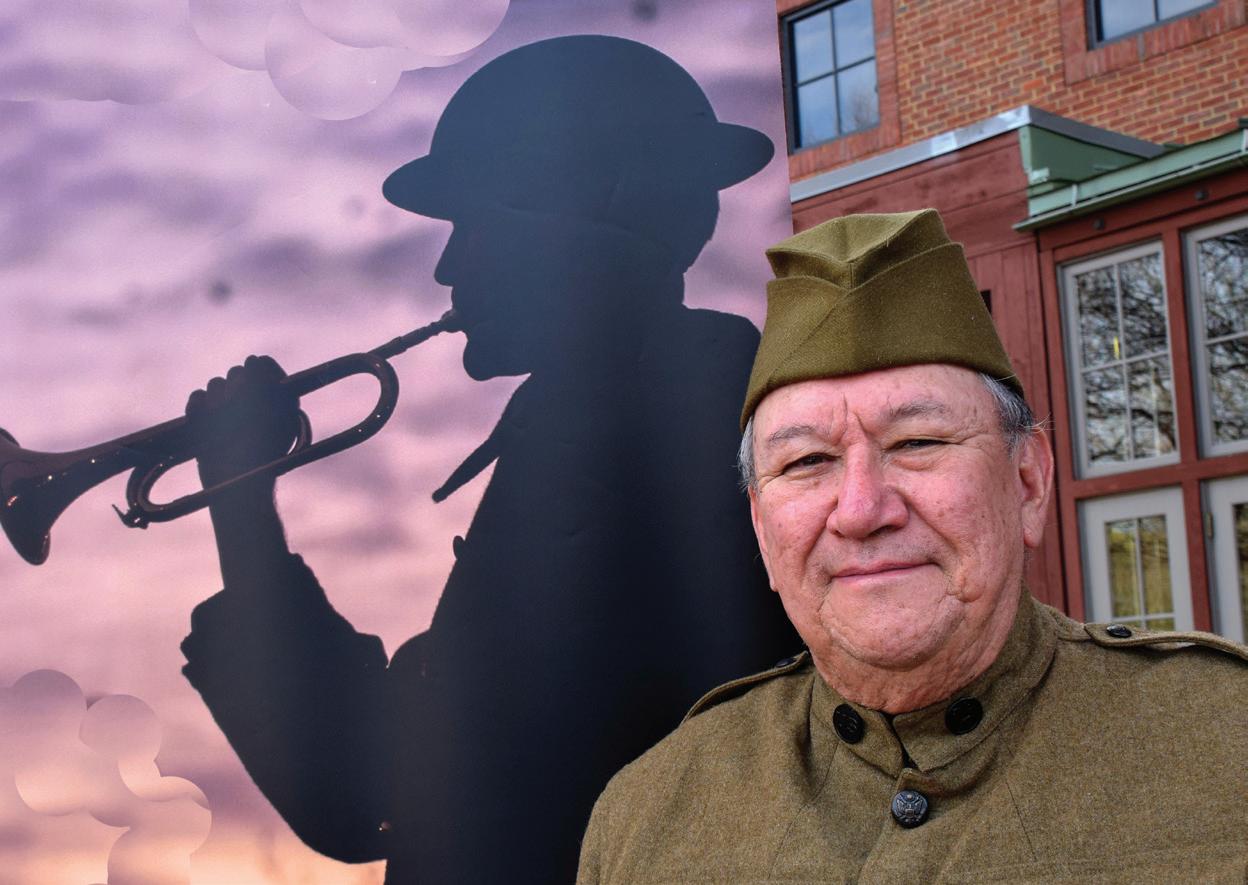
I work with historians and musicologists,” he said. “This is something that I can put my love of history and music together.”
Whether seated for a formal concert or moving through the MTA campsites at Jamestown Settlement for pop-up performances, Villanueva and the resurrected AEF Headquarters Band would have made General Pershing proud.
“The public is enthralled with them…They draw attention to an almost forgotten war in American history — The War to End All Wars,” observed Homer Lanier, director of Visitor Experience with the Jamestown-Yorktown Foundation.
“Jari is an expert musician, arranger and conductor. He really brings a great treat to us here at Military Through the Ages, year after year.”
Bob Ruegsegger is a freelance writer who has covered Jamestown Settlement’s Military Through the Ages for more than 20 years.
Read his full profile of Jari Villanueva and other 40th-anniversary event highlights at jyfmuseums.org/military-through-the-ages.
Paul Everett was sitting at a Pittsburgh Steelers game when he learned of a curious job ad seeking palisade wall builders at a place called Jamestown. It was Sunday, and the next day was the deadline to apply. He called the number in the ad and was told to drive his application and resume over.
Paul had been working as carpenter and cabinet maker, but something about this job was different. He accepted a part-time position with the exhibits team. Two weeks in, he was injured in a motorcycle accident. Wanting to keep the job, he came in and worked for nearly a year in a walking cast until a full-time position opened. That was 1992, and he has never looked back.
The department looked very different back then, and he reflects on being the only one left from the original crew. Many carpenters and fabricators once worked under the direction of a much smaller Curatorial team, including the indoor and outdoor spaces. He found the projects not only challenging, but also interesting and rewarding.
Beaming with a pride, Paul estimates that he has probably built around 60 different exhibits alone.
While he may appear to be the quiet, behind-the-scenes worker, he is enthusiastic about his work and his team. “The work starts long before me,” he said. “These designers, if they can dream it, we can make it happen. Whatever comes into your mind, we can make it.” After seeing a finished gallery, knowing it looks good and that he had a hand in it instills a sense of accomplishment.
Another source of great pride for Paul is his family. With retirement a few short years away, moments with his grandchildren are a priority. Expect to see him grab the clubs or a fishing pole from time to time, too.
—Lee Ann Shelhorse, Talent Acquisition Manager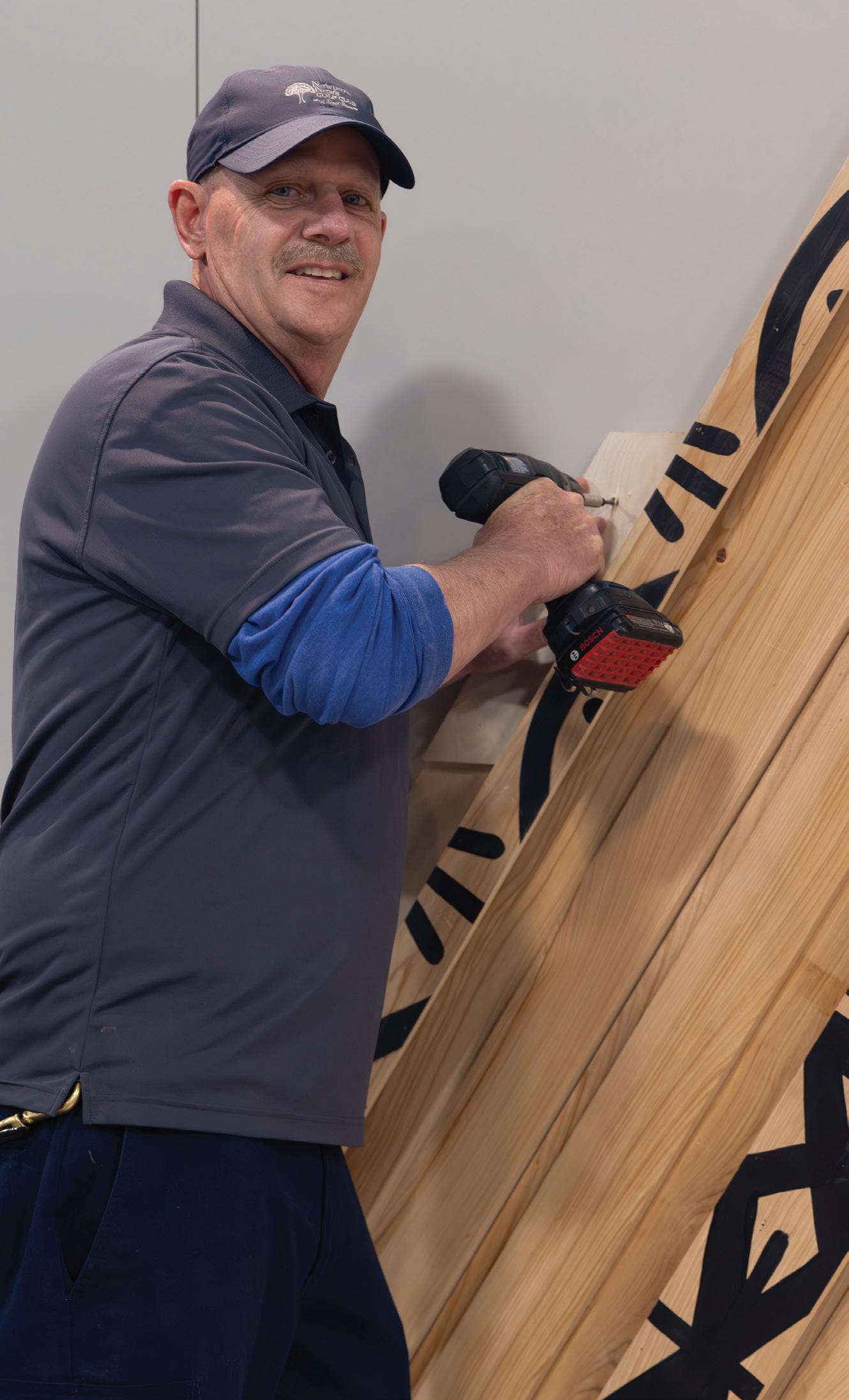

S“
Donating to JYF is an investment in teaching America’s early history - history often given short-shrift in the classroom.”
ince 2009, Bonnie Cooper has been a dedicated supporter of the Jamestown-Yorktown Foundation, demonstrating her unwavering commitment to preserving and sharing America's early history. Through her generous contributions to the Annual Fund year after year along with her planned gift, her impact on JYF's mission has been profound. Bonnie's dedication goes beyond financial contributions; she actively participates in events, including the beloved "Picnic on the Pier," the Director’s Series and the Mathews Legacy Society Luncheon. Her presence at these gatherings underscores her passion for the agency’s mission and desire to engage with like-minded individuals who share her enthusiasm for history and her enthusiasm for historical clothing.
Reflecting on her experiences, Bonnie fondly recalls her earliest memories of Jamestown Settlement — the Paspahegh town, the fort and the majestic ships. For her, visiting the museums is like witnessing Virginia's founding and the culmination of the American Revolution come to life.
She believes the museums offer invaluable learning opportunities for students, explaining that they are “incredible places for school students to experience the history they’ve read in textbooks.” One of Bonnie's most cherished moments at Jamestown Settlement was attending a 1600s fashion show, stating “it was one of the most creative ever.” The intricate costumes, meticulously re-created from museum paintings, transported her back in time. She remembers conversations with members of Jamestown-Yorktown Foundation’s historical clothing team.
Inspired by the historical fashion show, Bonnie's passion for historical preservation led her to make a substantial planned gift. Her generous contribution is designated to support the creation of historically accurate clothing for interpreters at both Jamestown Settlement and the American Revolution Museum at Yorktown.
Through this planned gift, Bonnie’s vision transcends her own lifetime; she envisions her support as a lasting legacy for many future generations. By ensuring that historical interpretation remains vibrant and engaging, she aims to leave an indelible mark on the foundation and the communities it serves.
In Bonnie, Jamestown-Yorktown Foundation finds not only a generous donor but also a dedicated advocate for historical preservation and education. Her generosity and passion serve as an inspiration to us all, reminding us of the importance of the work that JYF does each and every day.
—Olivia Glum, Major Gifts Officer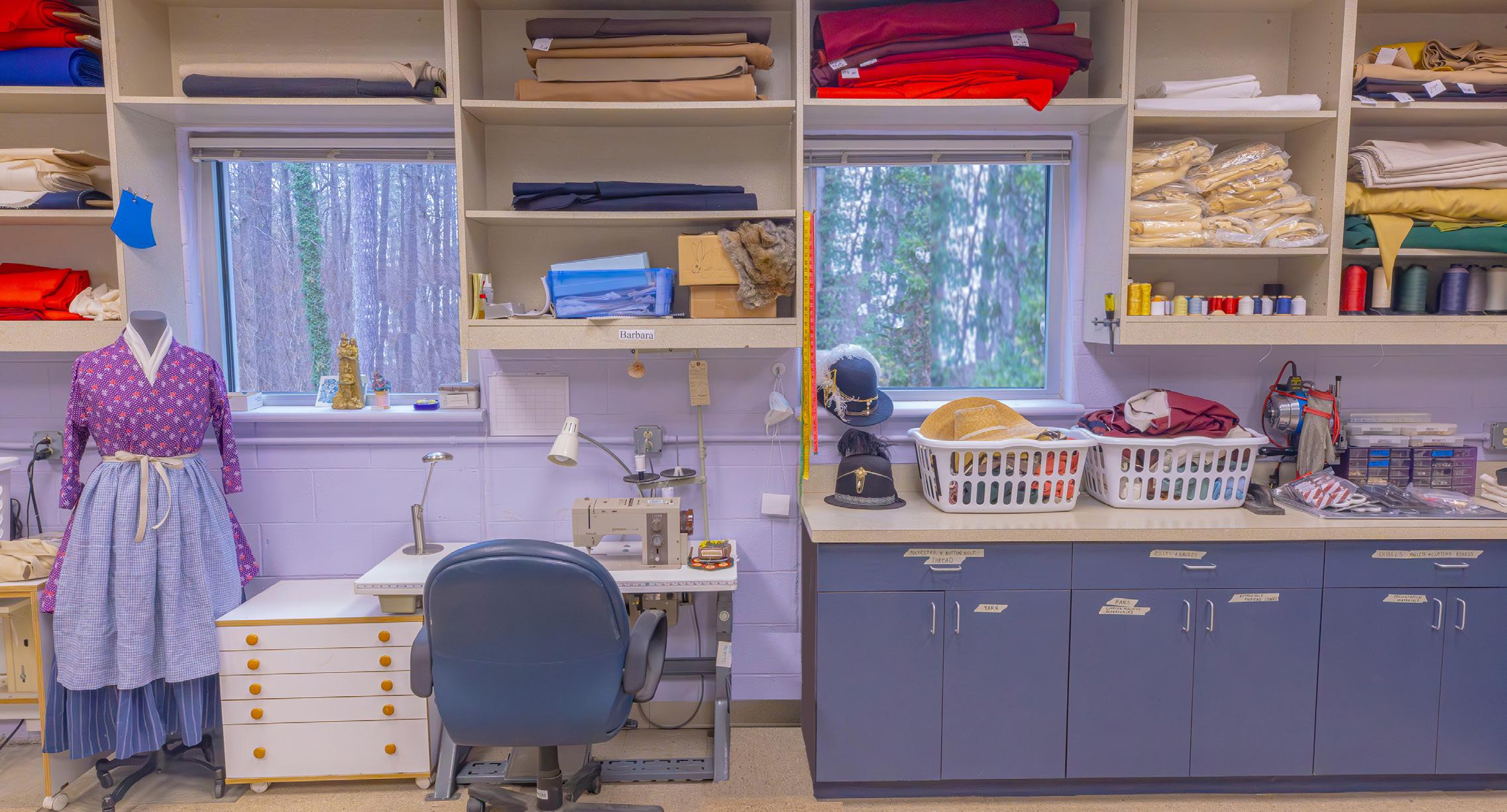
Our historical clothing program is crucial to the work we do at JYF. These items are not merely costumes, but tools that help tell the countless stories of America’s past. They provide a tangible link and relatable connection to our shared history, making it more accessible and engaging for all our visitors.
Your contribution to the Annual Fund ensures that we can continue to research, re-create and showcase the attire that defined eras and shaped nations. With your support , our museums can preserve not just garments, but the stories, traditions and people they represent.
From the everyday deerskin attire of Tsenacommacah to the vibrant hues of Revolutionary War soldiers, our historical clothing program brings the past to life with every stitch and button.
Visit jyfmuseums.org/donate to help bring history to life. Step into history
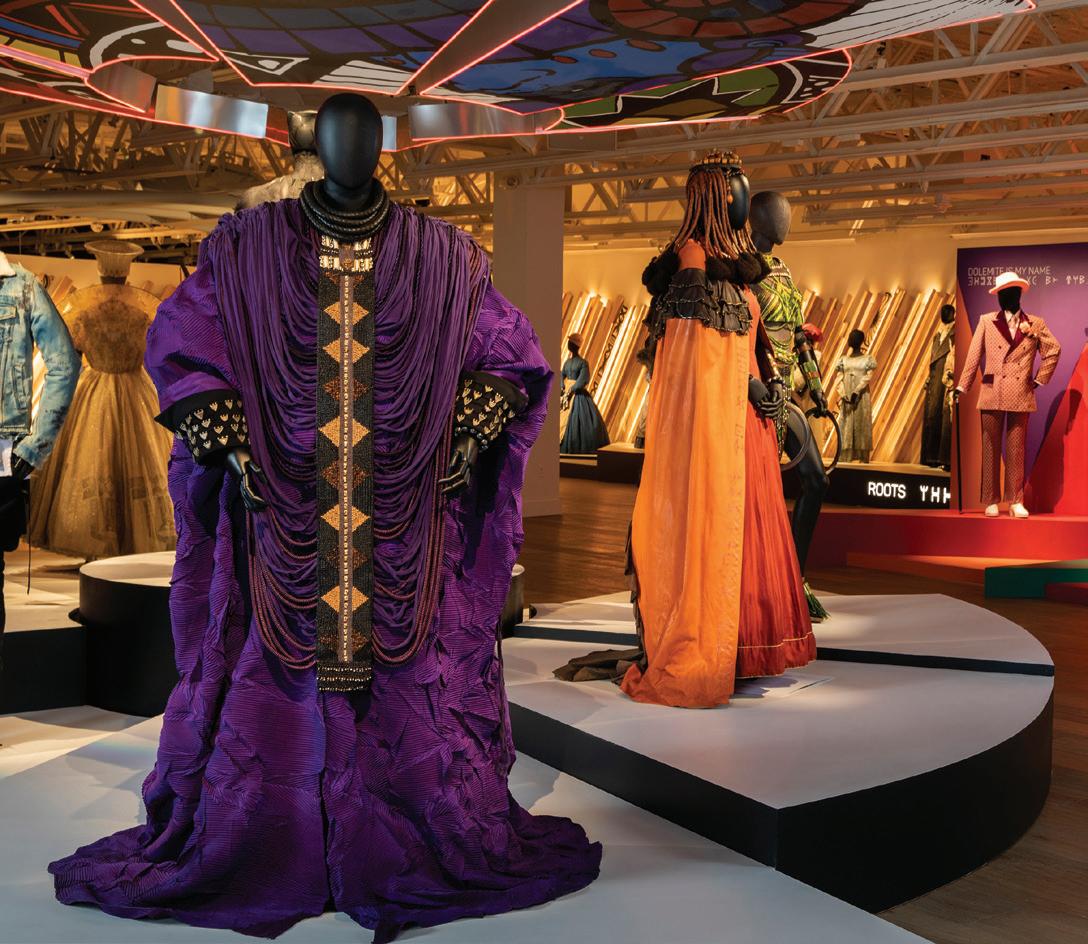
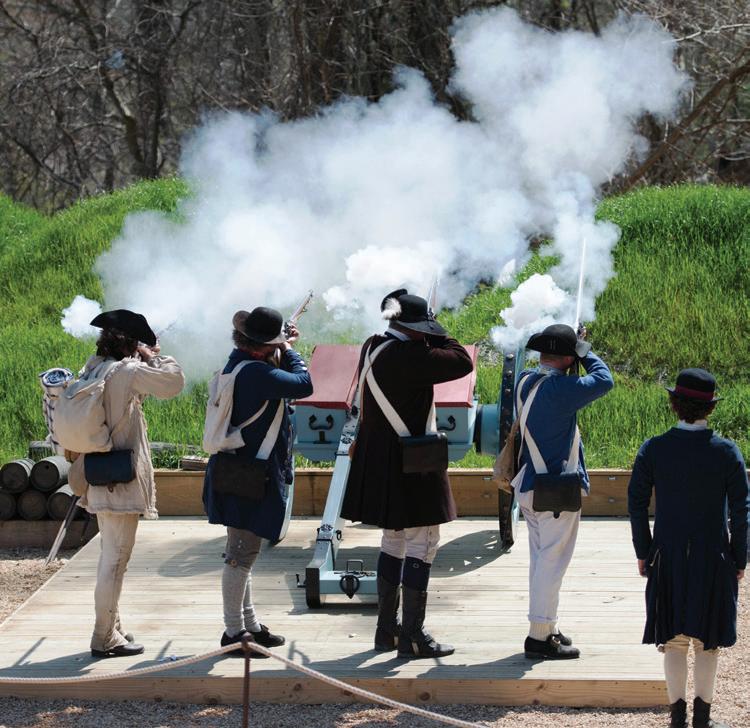
JOIN IN PATRIOTIC FESTIVITIES ON JULY 4 at the American Revolution Museum at Yorktown with artillery and programs that explore the challenges that faced our nation’s founders — those who signed the Declaration of Independence and those for whom the new nation’s rights of freedom and liberty did not yet apply.
THROUGH DECEMBER 1 AT JAMESTOWN SETTLEMENT, VIEW A SPECIAL EXHIBITION, showcasing 60+ original garments of Ruth E. Carter, a two-time Academy Award winner of iconic costume designs for film and television. View her acclaimed work to shape characters from 1619 to the Afrofuturism from Marvel Studios’ “Black Panther” to “Coming 2 America” to “Roots” and “ Amistad.” Robust design-focused programs and workshops accompany the exhibit, including a June 22 Mud Mali Cloth Design Workshop; July 27 Cosplay Makers Day; August 10 History & Cosplay Parade.
FALL SEASON FEATURES CONVERSATIONS ON SEPTEMBER 18 WITH DR. NED BLACKHAWK , member of Te-Moak Tribe of Western Shoshone Indians of Nevada and Yale University’s Howard R. Lamar Professor of History and American Studies, and OCTOBER 16 WITH DR. JULIAN ZELIZER, the Malcolm Stevenson Forbes, Class of 1941 Professor of History and Public Affairs at Princeton University. Programs begin at 7 p.m. at Jamestown Settlement.
CIVIC SEASON COMMENCES JUNE 16 to JULY 4, to spotlight American democracy through community art projects, engaging lectures and patriotic events. A prelude to Juneteenth on June 16 explores the Emancipation Proclamation on the Virginia Peninsula to the Declaration of Independence on the Fourth of July.


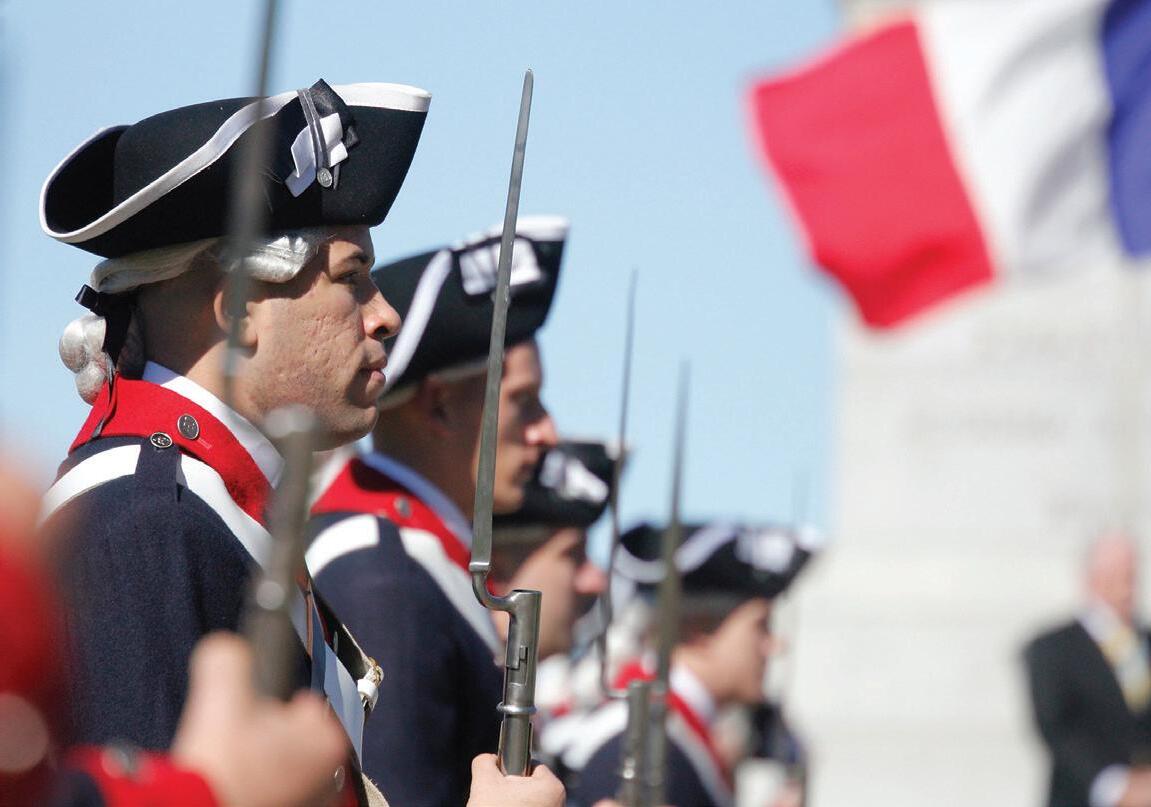
LAFAYETTE’S GRAND TOUR OF 1824 ON OCTOBER
19 – YORKTOWN DAY – is celebrated at the American Revolution Museum at Yorktown and throughout Historic Yorktown. Festivities kick off with a patriotic Yorktown Day Parade and Patriotic Exercises at the Monument to Victory and Alliance. Yorktown Victory Celebration salute the significance of the American and French alliance that won America’s independence in 1781 with artillery and special interpretive demonstrations.
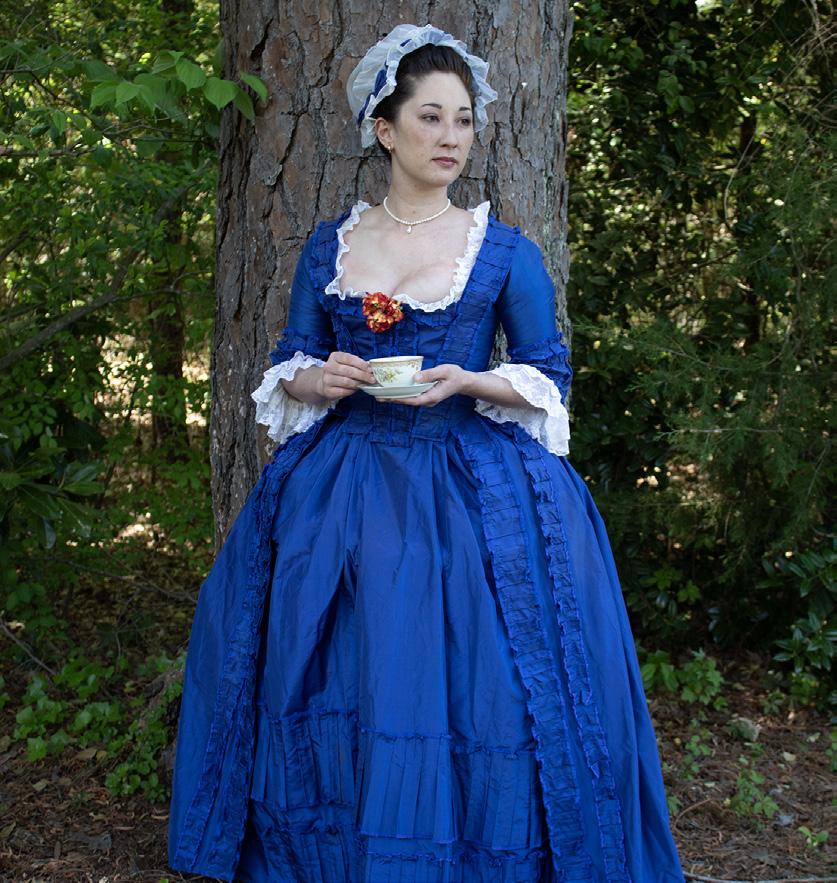
SEPTEMBER 28 & 29 AT AMERICAN REVOLUTION MUSEUM AT YORKTOWN SHARES NATIVE PERSPECTIVES ON 250TH ANNIVERSARY OF DUNMORE’S WAR, waged in the fall of 1774 by Virginia’s Royal governor, Lord Dunmore, against Shawnee and Mingo nations on the borderlands of Virginia. Shawnee tribal members of Oklahoma present cultural programs and demonstrations.
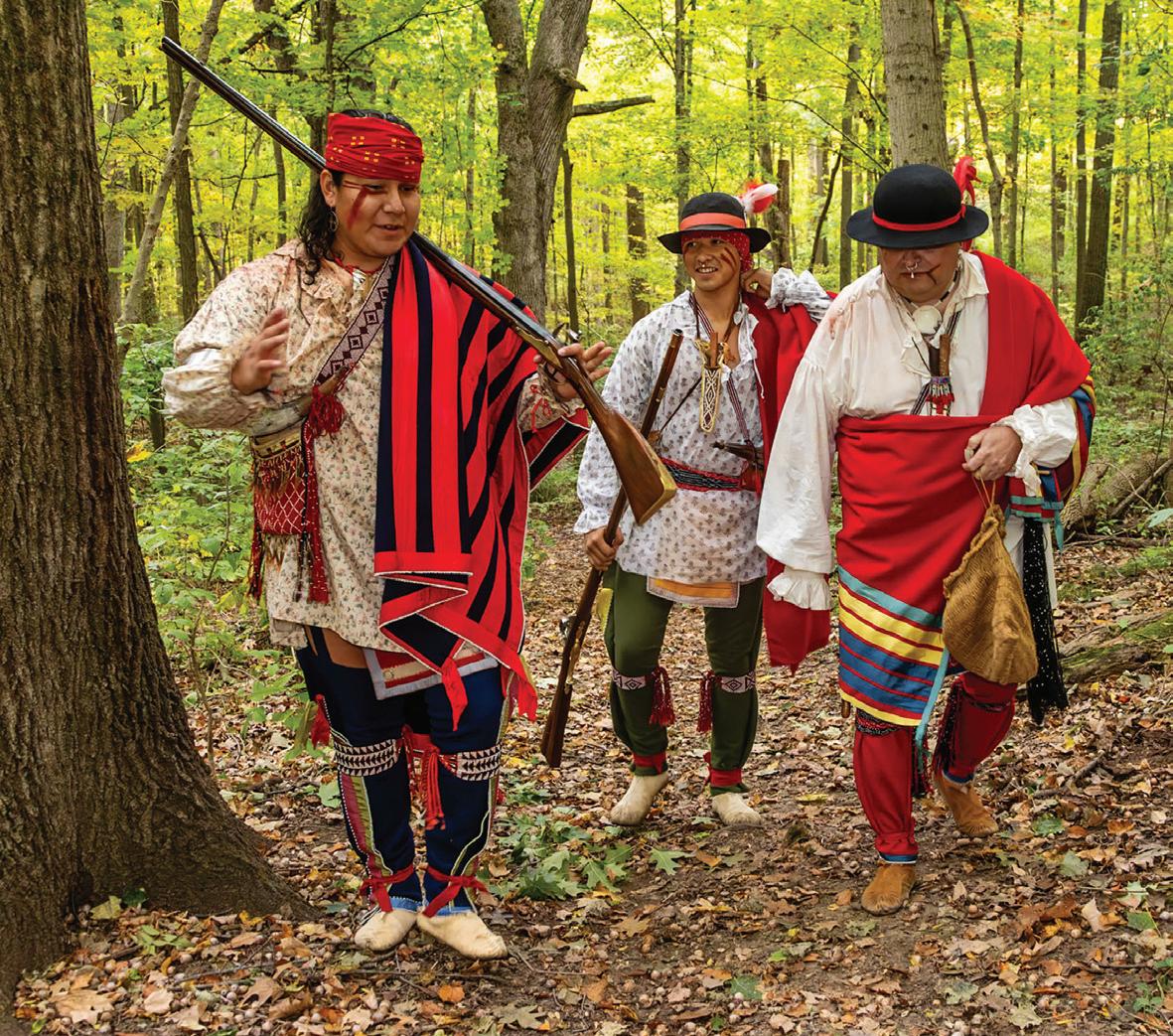
A NOVEMBER 8 COLONIAL TEA BALL AT THE AMERICAN REVOLUTION MUSEUM AT YORKTOWN is among Virginia American Revolution 250 commemorative events that pay tribute to Yorktown’s very own Tea Party in 1774. Bring dancing shoes and a revolutionary spirit to keep in step with ballroom dances of the 18th century. Townwide events take place November 4-10.
MORE 2024 EVENTS & PROGRAMS
Storytelling Family Day • August 3 | First Africans Commemoration • August 17
Homeschool Family Days • August 31-September 15 | Constitution Day • September 15
Family Frights • October 25-26 | Veterans Day • November 11
Foods & Feasts of Colonial Virginia • November 29-30
Museums open year-round 9 a.m. to 5 p.m. daily. Tours and ticket information available at jyfmusums.org/visit . Check out the complete calendar at jyfmuseums.org/events.
